Where is the Dinosaur?
by Taig Mac Carthy

Marketing is the price you pay for being unremarkable. So ask yourself: is your product relevant enough to be on the news? The answer to this question must always be YES. Life is too short to develop a product that is not remarkable.
🦕🦖🦕🦖🦕🦖🦕🦖🦕🦖🦕🦖
The following pages will teach you the frameworks and the tools that will allow you to achieve free media coverage and reap the fruits of the most powerful and cost-effective way of promoting anything. In essence, this book is a step-by-step guideline on how to get your project into any news outlet in the world, achieving enormous growth at no cost. We have designed the book to convey the essentials of what you need to know, quickly, simply, and in a visual format. Examples are presented pictorially and the content is complemented with exercises and workshop scenarios you can use immediately.
It is our firm belief that media coverage should not be merely a marketing device that businesses deploy at the end of the innovation process, once the product is finished. On the contrary, we believe that media coverage should be part of the ideation process because it brings insights to the table that improve the chances of success of every project.
Through this book, you will gain deep insight into the nature of mass media so that you are able to build a product that is effortlessly viral and engaging. The ideas, tools, and frameworks presented here have been tested and refined over the years in corporate practice in Europe, the United States, and Asia, as well as mentoring early stage and growth-stage startups with both digital and physical products.
If you have big dreams and a tight budget, this is the book you need. Marketing is the price you pay for being unremarkable. Don’t pay for marketing. Get yourself a dinosaur.
Table of Contents
The book is divided into two parts. The first part is called Create and offers tools and step-by-step guidelines on how to create remarkable stories and write engaging press releases. The second part is called Show, and covers techniques to get your story published in the media and mechanisms to measure the impact of the media coverage attained.
In the first part, we will share two tools that we have created: 1 The News-Worth Canvas, a tool for describing, analyzing, and creating remarkable stories, and 2 The News Builder, a tool for creating killer press releases and perfect news articles in a very systematic and easy way. Then, in 3 Dinosaurs we provide ten examples built on major success cases in the media landscape to make the concepts comparable, easy to understand, and applicable.

Likewise, the second part is divided into three sections: 4 Contact, explaining how to contact journalists and get them to publish articles, 5 Perform, a guide on how to conduct interviews and avoid the most common mistakes, and 6 Measure, with tools and framework to make the most of our the media coverage.

WARNING
We have been warned of the dangers of this book. To be honest, the tools and the concepts that we will be sharing with you here could be dangerous if they fell into the wrong hands — we can admit that. But here is the thing: this knowledge is already in the wrong hands. There are individuals and companies all over the world that are hacking the media and taking advantage of News-Worth Dynamics to spread their influence with complete disregard to the well-being of society.
Our aim in publishing this book is to level the playfield. We are sharing this knowledge to empower honest and hardworking entrepreneurs by teaching them the same strategies that powerful people use behind closed doors. We want innovators to benefit from the power of well-built press release so that they can grow at an amazing rate. We want creators to understand not just how to create value, but also how to supply elements of interest that will save them millions in marketing. And lastly, we hope to raise awareness among the general audience on how the media operates in this century so that everyone can draw their own conclusions when confronted with the news.
With great power comes great responsibility. So please be responsible with the knowledge you will gain through the following pages and don’t spread fear or hate while you deploy these tactics for your own gain.
INTRODUCTION
May 9, 2015. I will always remember that date because it changed my life forever. On that day, my startup was featured in the news of a major Spanish TV channel and I became a successful entrepreneur overnight. The website crashed due to the huge amount of visitors and my phone was receiving so many calls and texts that the battery couldn’t take it. But this was just the beginning: during the following months, we were featured in thousands of media outlets from all over the world and we made over one million euros with a non-existent marketing budget — and the product wasn’t even finished.
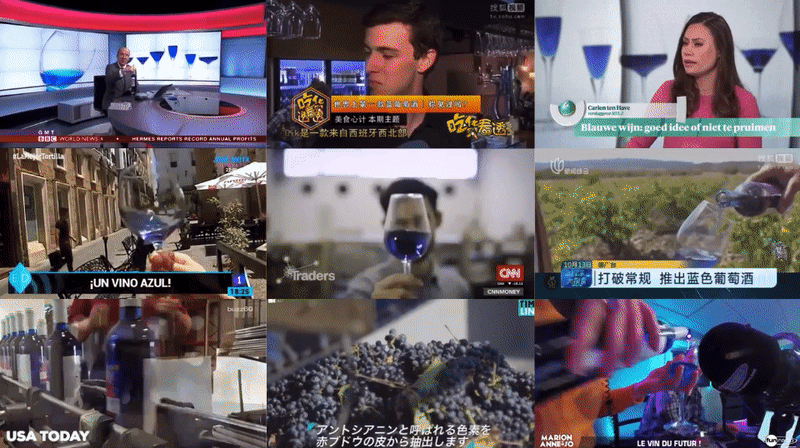
Before our stream of media coverage, I was a 23-year-old college dropout with a product that no one wanted to invest in. I was sleeping at someone else’s workshop and I couldn’t even afford a mattress. We were trying to innovate in one of the most traditional and well established industries of the world: the wine industry. And almost overnight, our first wine was suddenly so relevant and viral that journalists were knocking at our door and customers were placing orders quicker that I could count them. We earned hundreds of thousands of page views that translated into sales with a 5.4% conversion rate and the lowest customer acquisition costs you could ever imagine.
This didn’t happen by accident. Getting media coverage was my plan all along and I was very deliberate about it. So much so that every aspect of the project, from the naming of the brand to the recruitment of my co-founders, was done in a way that would allow us to become newsworthy and grow rapidly without a marketing budget. Every feature and characteristic of product itself was conceived to add up to the newsworthiness of the story. And I was only able to do this because I had a good understanding of Mass Media Dynamics: I knew what is and what is not considered newsworthy.
After our success with the blue wine, we created other wines following the same strategy. And it kept working like a charm over and over again: our new products were featured in major media outlets of many countries, turning them into commercial successes overnight. Even before each product was finished and ready to be sold, we had customers placing orders thanks to the media coverage we were able to achieve. This allowed us to test the market and be strategic about many decisions before making big investments. That is why we say that media coverage is the ultimate growth-hack. It will allow you to test the most important aspects of a business without needing investors or loans, and therefore giving you great freedom to experiment and innovate. It will allow you to scale up at a speed that otherwise would not be possible. And it will allow you to go mainstream really quick — something that is useful when you are not so sure who is exactly the right customer segment and you need to experiment and learn quickly.
And if you do it right, it will get you into BBC News, USA Today, The New York Times and a hundred more media outlets at no cost — that is literally what happened to me. You will simply go mainstream for free. And it’s entirely possible that you sell a million euros in your first year with zero marketing budget, like we did.
This is why it really breaks my heart to watch talented entrepreneurs fail because they don’t know how to attract people’s attention. It’s just a tragedy that projects keep failing to get free media coverage or that they end up developing a great product that no one cares about or even hears about. And what makes these failures particularly painful is not the financial damage done to founders, employees and investors; what really breaks my heart is the waste of the most precious resource: time.
As a result of the success, my company got acquired by a larger international brand, giving me a chance to work on new projects and spend some time sharing my knowledge with other startups and companies. Unsurprisingly, most of the companies that I help are facing the same problem and they don’t even know it: their story (if they even have one) is missing basic elements of interest. They are missing what we call a Dinosaur. They have a good product, but lack something that makes them remarkable and newsworthy.
When I tell the people about Dinosaurs, people usually reply:
— But we are launching a [whatever], there is nothing we could possible do to make it newsworthy. It’s just [whatever].
Don’t even think that way. You need to get rid of the ”it’s just a…” mentality. I’ve done it with wine, skateboards, gummy bears, jewellery, online courses, architecture marketplaces, dog food… you name it. Everything can be remarkable, newsworthy and fucking fantastic — and your company is no exception. You simply need to find a Dinosaur.
So here it is: Where is the dinosaur? The ultimate guide to developing a product that people care about and getting your startup into any media outlet, reaching thousands of hundreds of customers at no cost.
Let’s find you a dinosaur.
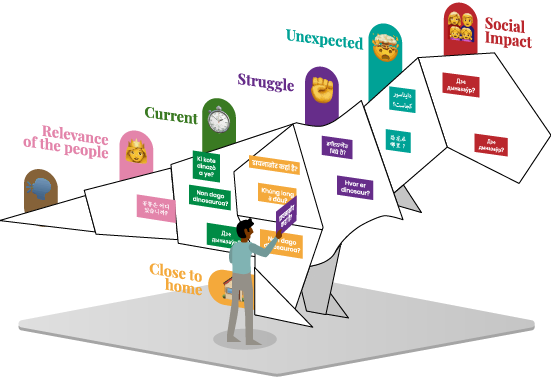
THE NEWS-WORTH CANVAS: The ultimate tool to create newsworthy stories
I am one of those people who grew up having no idea about what they wanted to be when they grew up. And so my journey to thinking about business and creating products has taken a circuitous path. I studied a lot of things at university without ever settling for a line of work.
After several years of intensive marketing work in my own startups, combined with my academic knowledge in Journalism and Psychology, I began understanding what really drives people’s attention. That is what we call News-Worth Dynamics. Understanding News-Worth Dynamics provided me a clear framework for creating products that people would care about and that organically get into media outlets without too much effort.
Thanks to the application of journalism and mass media frameworks to business development, I was able to test and grow my startups quicker than anyone would think is possible. Instead of focusing on profitability or solving problems, I was more focused on creating something that people would care about. So I kept asking myself: what is the element of this idea that makes it newsworthy? In other words: where is the Dinosaur?
Understanding News-Worth Dynamics is particularly useful at the early stages of a new project. Thinking about your project in terms of a story that people care about really gets you thinking about the right things. It forces you to build something that is connected to what people are interested in. It forces you to create something that is easy to explain even to the most uninformed person. That is why Jeff Bezos demands his teams at Amazon to come up with a press release before even considering to develop something new. It forces them to reflect on the project in terms of what people buy, not in terms of what they are selling.
The main idea behind News-Worth Dynamics is that all stories need to have something to make them newsworthy. Not all information is newsworthy. Stories need to supply certain elements of interest to qualify as news. These elements of interest conform the Seven Traits of News-Worth.
The Seven Traits of News-Worth are taught in journalism schools all over the world and they are used in every media outlet to separate news from noise. In other words, journalists decide what gets published and what remains unread by looking at the Seven Traits of News-Worth. For something to be newsworthy, it must be:
- 🏠 Close to home
1. 📍 Geographically close
2. 💬 Thematically close
3. ❤️ Emotionally close - ⏱ Current
- 👨👩👧👦 Have broad impact
- 🤯 Unexpected or bizarre
- 👸 Involve relevant people
- ✊ Cause struggle or conflict
- 🗣 Have previous media coverage
With the Seven Traits of News-Worth in mind, and after years of trial and error, we have created a handy tool that we call the News-Worth Canvas. The News-Worth Canvas has seven modules, one module for each trait of news-worth. This tool resembles a painter’s canvas and allows you to draw on seven connected boxes.
The News-Worth Canvas will help you and your team to brainstorm and develop newsworthy stories that make your project organically viral. It will allow you to explore the nooks and crannies of your bright mind so as to master all the elements that make a project newsworthy.
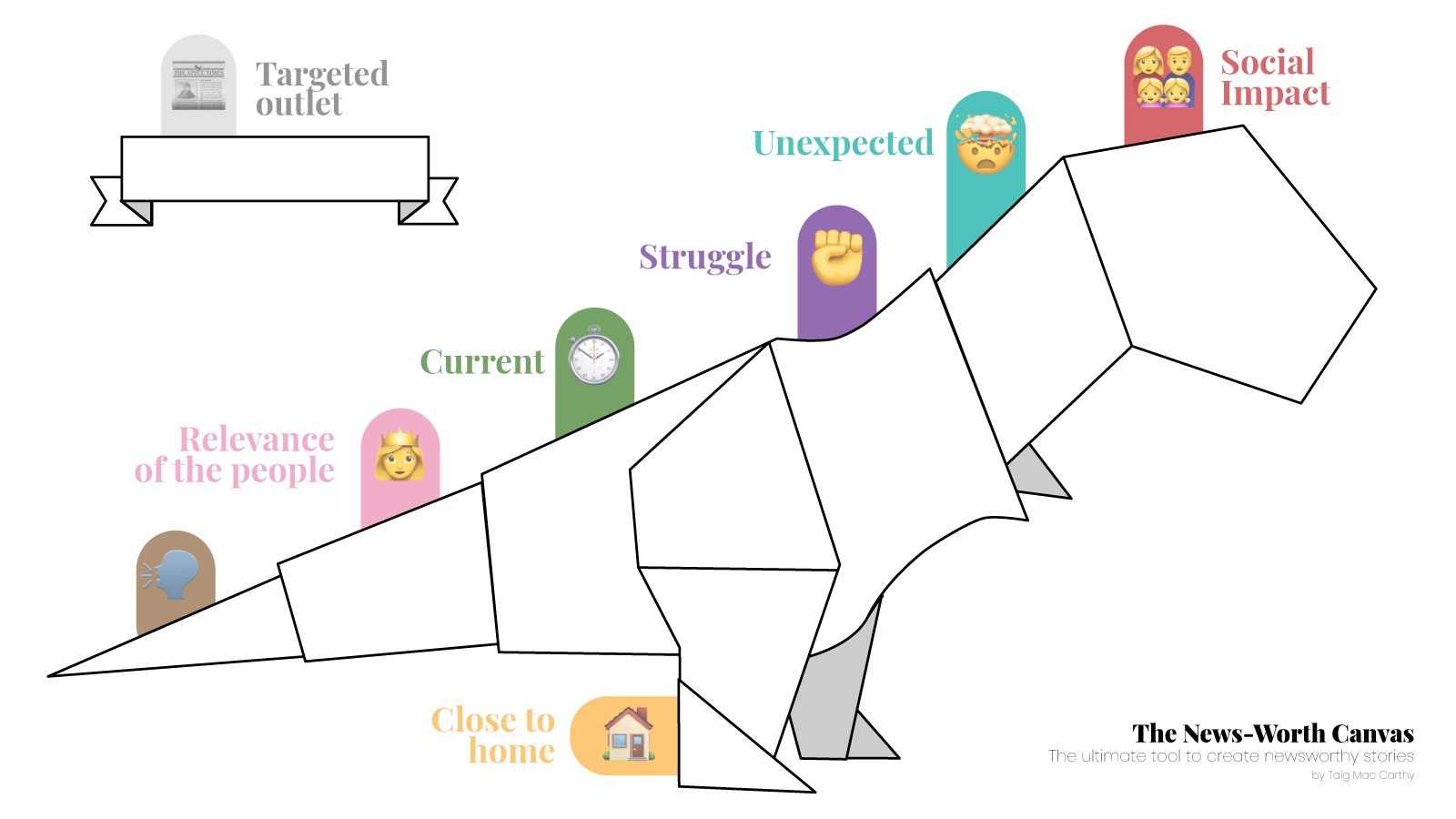
As well as a brainstorming tool, the canvas has become a shared language that allows a growing community of entrepreneurs and academics to easily describe and understand why a story is newsworthy. It is a great way of mapping out an idea, allowing it to be understood, tested and improved. In other words, the News-Worth Canvas is a tool to create stories and also to understand why stories are newsworthy, in a very visual and easy-to-understand way.
The News-Worth Canvas works best when printed out on a large surface so that groups of people can jointly start sketching and discussing newsworthy elements of a story with Post-it® notes or board markers. It is a hands-on tool that fosters understanding, discussion, creativity and analysis of stories.

You can also use the canvas in a Google Slides format if you are working remotely with your team.
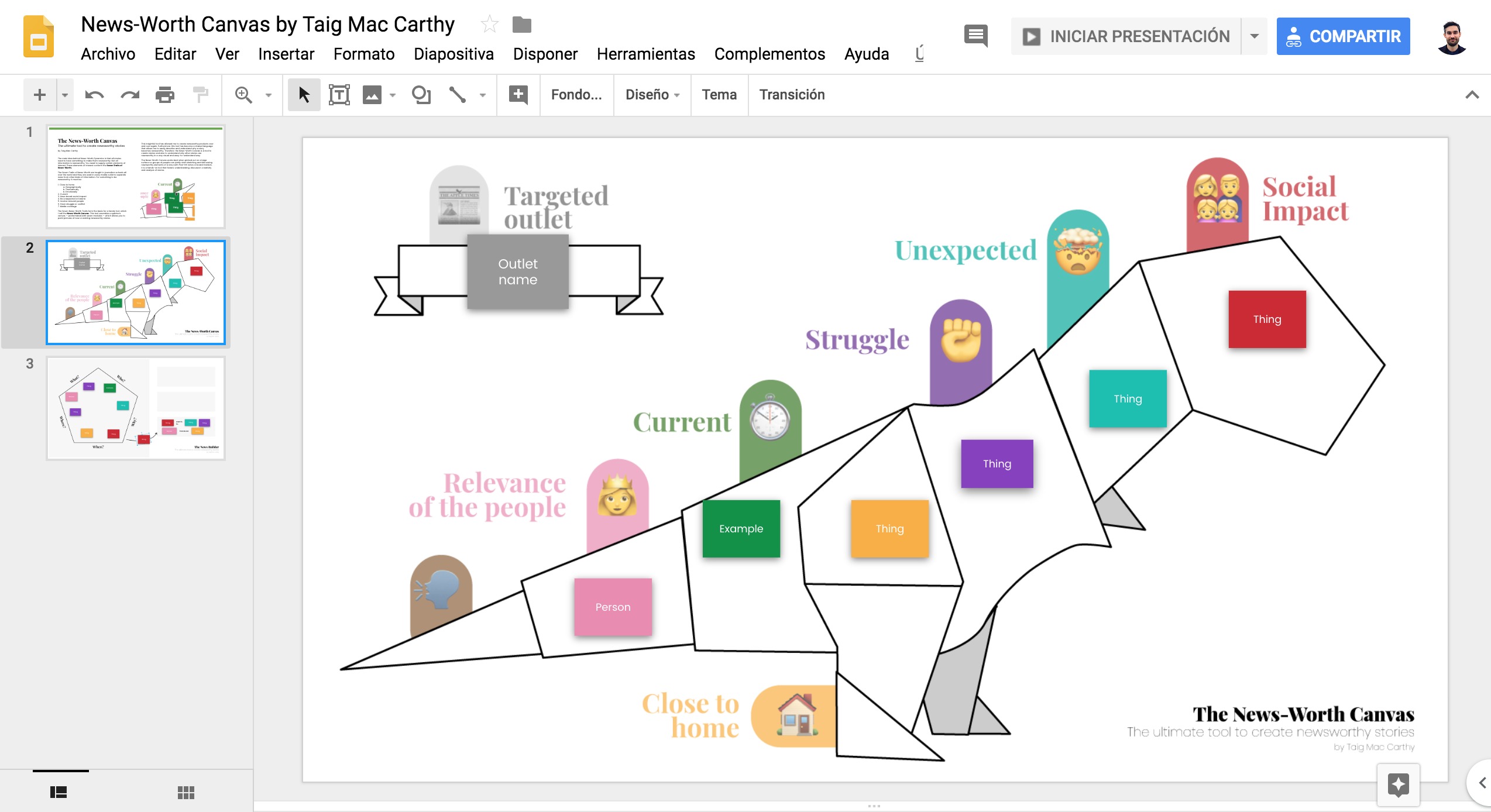
Let’s take a look at each module one by one.
The Seven Traits of News-Worth
1. 🏠 Close to home
Dinosaurs happen in your neighborhood.
Closeness to home is the most basic trait of news-worth. Proximity is absolutely necessary if you want your company to be on the news because the audience is only interested in stories that happen in their close environment. That is why I suggest you start the exercise on this module.
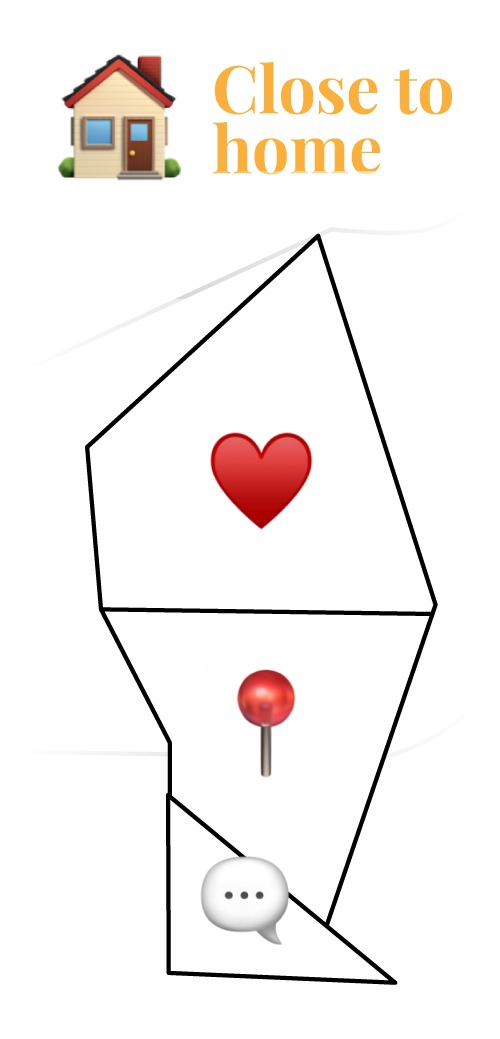
There are three ways of being close to home:
- 📍 Geographically close: applies to what is close physically speaking. For instance, something that takes place in the same town or city.
- ❤️ Thematically close: it concerns how the topic itself is relevant to the audience. For instance, a company doing blue wine would be more relevant to the French or Spanish audiences than the inhabitants of Iceland or Norway; just as American football would only be newsworthy in the US.
- 💬 Emotionally close: refers to what touches the audience morally or emotionally. For example, a terrorist attack in Europe would be very close to the US audience emotionally speaking.
Journalists care a lot about the proximity of the story, so you need to find a way to make your story close to the audience of the outlet. For example, if you want to appear in the newspaper Le Parisien, your story must be somehow relevant to people in Paris.
Even if you are a foreign entity, you must find a way to present yourself as a local initiative to appeal to the journalist of each region. This explains why the local newspaper of your hometown will always be more inclined to publish a story about your company: it’s easy for you to be Close to Home when you are literally close to home. Otherwise, you must get creative and think of ways in which you can tackle a theme that is close to the audience or arouse an emotional response.
You will find an inventory of strategies for making your project close to home in the following pages. For now, keep in mind that if you find a way of making yourself close to home to every outlet, getting media coverage will be a piece of cake.
2. ⏱ Current
Dinosaurs are happening right now.
The story must be happening right now, otherwise, it will not be newsworthy. Something is newsworthy while it happens, even if it was foreseeable. The past is not newsworthy. The future is rarely newsworthy. The event has to be timely. This is a determining element to differentiate news from noise.
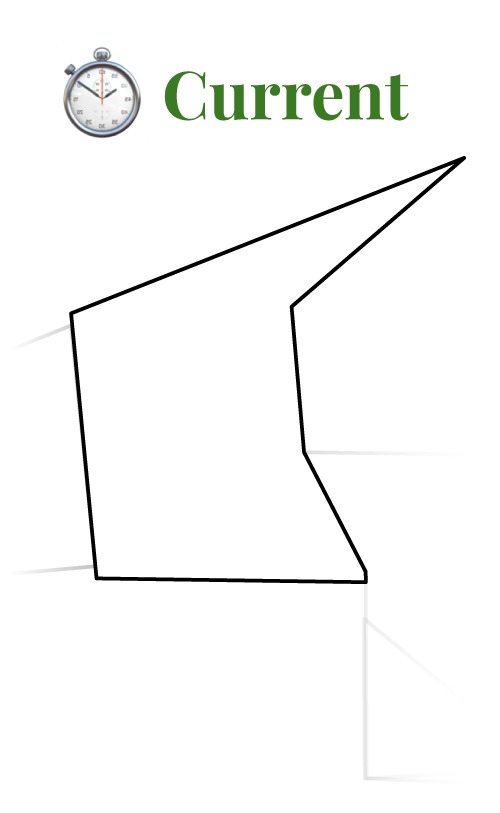
The time in which the story happens is usually implied in the verb of the heading, rather than being explicitly mentioned. So this is how you should write your headline:
Company just launched a product today ✔️
And never:
Company will launch a product next week ❌
Company launched a product earlier this month ❌
It is essential to find a way of making your project current, otherwise, you will not be able to get your project into the news. This explains why traditional, long-established companies have to pay so much for advertising in media outlets, and newcomers seem to get coverage more easily — their novelty makes them seem more current. But even if you are a novel startup, you must find a way to present yourself as something happening at this moment.
This also why media coverage is difficult when you try to promote in advance a conference, a party or an event in advance. When promoting an event, you need people to be aware many days before the date. The problem is that journalists will not publish an article about something until it’s already happening. So you must either pull off some kind of stunt prior to the event or simply pay for advertising.
You will find tricks to make your project current in the following pages. For now, simply remember that you must be as current as possible to amplify the news-worth of your project.
3. 👨👩👧👦 Broad Impact
Dinosaurs affect a lot of people.
Having a broad impact makes a story automatically remarkable. As a matter of fact, journalists will publish anything that affects a lot of people, even if it’s not that amazing — and the more people involved, the more newsworthy the story will be.
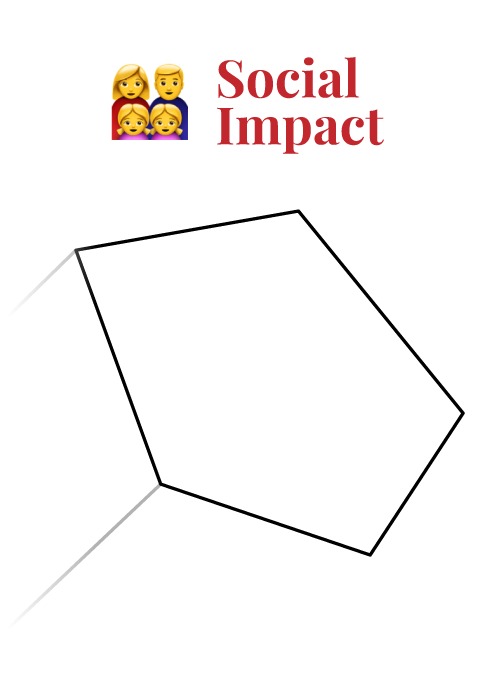
This is also why journalists tend to focus on bad things, like terrorist attacks or natural disasters — because they affect a lot of people. It sounds grim, but that is their job and it’s very valuable to society. Yes, there is an element of morbid fascination, but that says more about society than about journalists.
Everyday issues such as Health, Transport or National Security have an impact on a large population and generate much public interest. This is why mainstream media sometimes publishes articles about rises in income tax –even though it’s a dull topic– since it affects many people’s pockets.
This trait is heavily dependent on the audience of the outlet that you are targeting. If you are targeting a mainstream outlet, your story must impact a very broad audience — as close to everyone as possible. On the contrary, if you are targeting a local outlet or one that focuses on a specific topic (technology, gardening, law practice…) you can narrow it down to that audience.
When considering what has a broad impact, keep in mind that in mass media you need to appeal to normal people with normal lives and who care about everyday normal stuff, not investors or experts in your field. I usually consult my projects with my mother, because she is very straightforward about not being interested in the technical intricacies of my work.
To sum up: when coming up with a story, bear in mind the impact that your project has over the audience and try to make it as widespread as possible. You will find ideas to amplify the impact of your project in the next section of this book.
4. 🤯 Unexpected or bizarre
Dinosaurs are surprising.
Journalists are very interested in stories that catch their audience’s attention. It is that simple. Therefore, if a story has some element of surprise or something bizarre, it is more likely to be published.
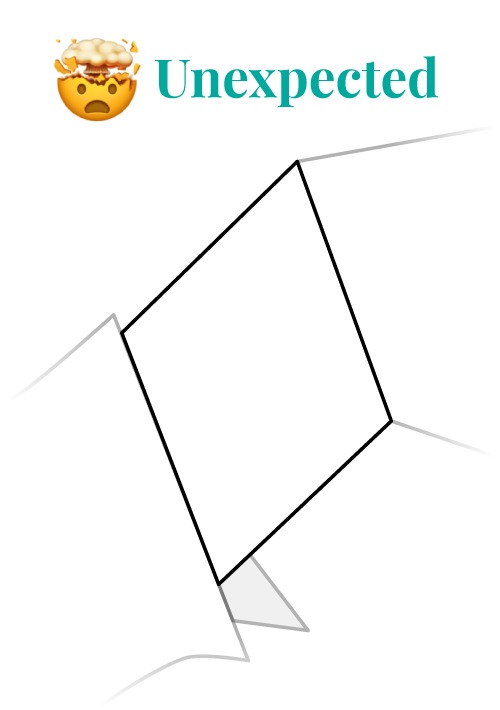
This is why you often read articles about snow in September or grandmothers turning 100-years-old. These stories are an infraction or a deviation from the normal course of things and therefore become newsworthy.
Discoveries are also surprising. For instance, journalists often publish the results of scientific studies if the results are somehow surprising — in some cases regardless of their accuracy. This also explains why Donald Trump or Kanye West keep gaining influence by saying outrageous things. Every time they do something crazy, they generate unexpected and bizarre stories that the audience loves reading and journalists love covering.
If you find a way of making yourself unexpected or bizarre, then getting media coverage will be way easier for you. I have some great examples for you in the following pages.
5. 👸 Relevance of the people involved
Dinosaurs implicate influential people.
Journalists follow leaders of opinion. This trait is so important that a quote alone can turn something into a newsworthy story; if the person quoted is relevant enough.
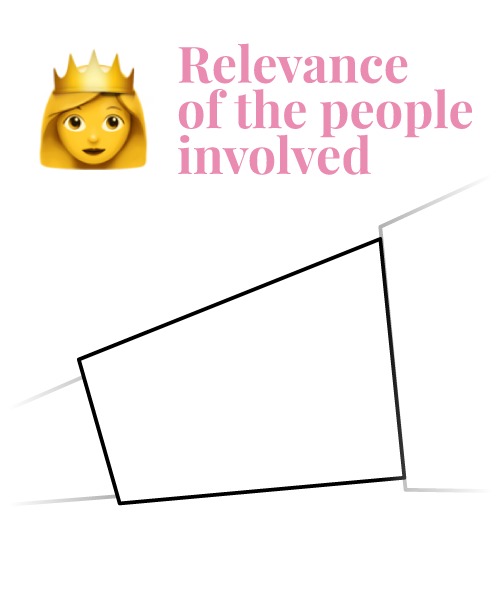
Leaders of opinion can be of three types:
- Public figures such as the UN Boss or the CEO of a company. People might not know the identity of the person, but they know the stand they speak from or their title.
- Institutions such as governmental branches or foundations, who often give awards. It could also be a hospital, a research center, a statistic observatory… any institution that is understood to be a leader of opinion will be considered relevant.
- Celebrities such as Kim Kardashian or Donald Trump.
When a startup develops a gadget, it may not be newsworthy. But if a renowned doctor or a celebrity praise it, the quote alone can turn it into a newsworthy event.
For instance, take a look at these stories:
Apple CEO Tim Cook says company will donate to Hurricane Michael relief
Deadly Yemen famine could strike at any time, warns UN boss
In both cases, the story is that someone says something, rather than the thing itself; because people known by the public are often news, more so than whatever is actually happening.
The same goes for awards: if an institution thinks that your product is important, a journalist might take their word for it and publish a story about it.
For example:
Unique Ghana college wins $500,000 award. USA TODAY
Fashion Gives Its Top Award to a Man Who Says He Isn’t a Designer. 2018/06/05. New York Times
Parkland Drama Teacher Will Receive Tonys’ Education Award. 2018/05/31. New York Times
Fury in Germany as Rap Duo With Anti-Jewish Lyrics Gets Award. 2018/04/18. New York Times
Sim Chi Yin, a Patient Photographer, Wins Chris Hondros Award. 2018/04/25. New York Times
In all these cases, the award itself is the story, rather than the person or the company receiving the award.
The most extravagant way of achieving this is celebrity involvement. If you get Trump to criticize you or Ashton Kutcher to be an investor, that makes it newsworthy simply because the people involved are known to the audience.
Keep this in mind when crafting your story and try to implicate famous or notorious people or institutions in order to make it more remarkable.
6. ✊ Struggle or conflict
Dinosaurs cause agitation.
The struggle between parties is a great element of interest. Something that would normally not be newsworthy can instantly become newsworthy if there is conflict involved.
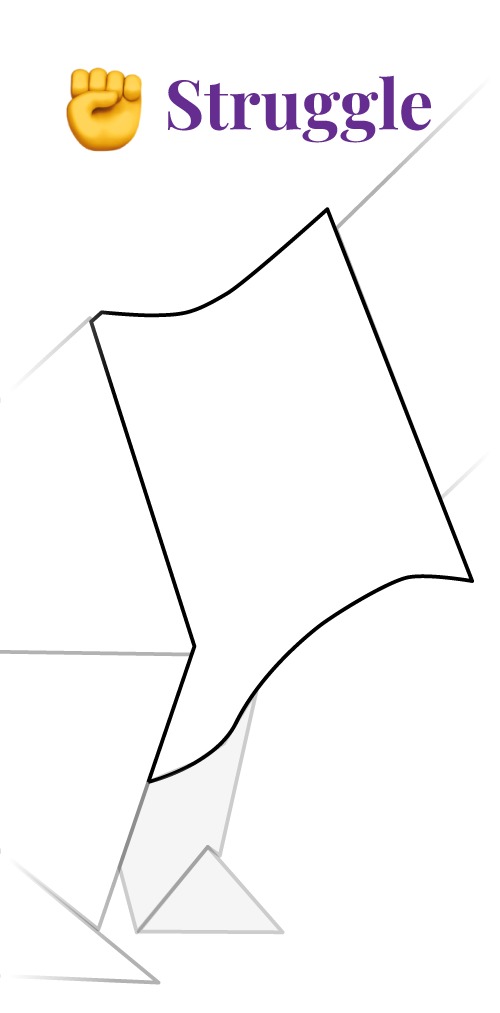
This is true for news stories as much as any other kind of story. Imagine a movie in which the boy and the girl fall in love and everything goes fine and everybody is happy and they have a child and nothing bad happens. No one will pay to watch such a movie. We all want drama, turmoil, tragedy, and tension.
The most newsworthy stories are those that arouse both love and hate from different sectors of society. Entrepreneurs often try to please everyone and try to avoid people hating them. This is a bad strategy from the news-worth dynamics point of view. If the story is newsworthy, it’s very likely — and certainly desirable — that someone will feel strongly against it.
For instance, in a “David vs. Goliath” situation, some people will get excited and support the new contender as they defy the status quo. However, people belonging to the status quo will not support the new contestant, and therefore there will be a clash of opinions, which means that some people will be against it. It is inevitable.
Please remember that this is good for you. In fact, people who hate something tend to talk about it even more than those who support it. Therefore, when thinking about your story don’t be afraid of drama. Conflict works as a fuel for interest and makes your story more newsworthy, as you will learn in the examples set out in the following pages.
7. 🗣 Previous media coverage
Dinosaurs appear in the news.
Generally- speaking, people assume that something is newsworthy once it has been covered by media outlets — even if it’s not really that interesting.
This is why it is so much easier to get into a big outlet once you have appeared in a smaller one. In one of my first startups I tried to get into nationwide TV news with no success — until one day, someone called me from the largest news channel asking for an interview. I later found out that they became interested in the story after reading an article about the project in a smaller newspaper.
Also, remember that news outlets compete against each other for the best stories, both in quantity and quality, but especially in speed. So a good way of getting an editor or a reporter interested in your story is letting them now that another channel or newspaper is interested too.
So try getting into a smaller outlet first to get validation that will add up to the news-worth of the story.
TIPS
Team up
Don’t dinosaur by yourself. This is not how human brains work. Especially when working with the News-Worth Canvas, because it is supposed to be fun. Think of it as a game rather than a marketing exercise and don’t be afraid of making jokes or saying crazy stuff. Some of the best ideas start as a joke.
It is very important that you use the canvas along with other people: either your co-founders, your friends or even your relatives. Anyone that helps you have fun in the process will improve the outcome dramatically. That is why we strongly advise you to team up.
As we have mentioned already, the canvas works best when printed out on a large surface so that groups of people can jointly start sketching and discussing newsworthy elements of a story. You can also use the canvas in a Google Slides format if you are working remotely with a team that is in different locations.
Start by picking one media outlet
When filling up the News-Worth Canvas, the first task you must complete is choosing the outlet you will be targeting. It is vital to have a single outlet in mind during the whole exercise because many of the traits depend on what media outlet you want to appear in.
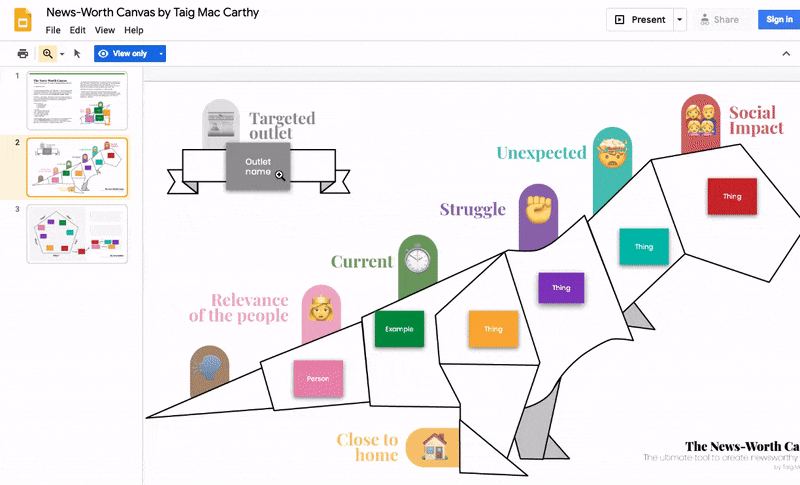
It should be self-explanatory, but in order to make a story Close to Home, you must first settle on a location to call home. If you are targeting USA Today, the story must be somehow close to the whole US nation. However, if you are targeting The Improper Bostonian, you should make it close to the Boston area specifically. Likewise, if you want the story to have a Broad Impact over the audience, you must define what the audience is. Impacting the audience of a niche magazine that is focused on a single topic, like Law Practice or Fishing, requires a very different approach to impacting a nation-wide newspaper.
So picking an outlet in advance is key when working with the News-Worthy Canvas. That is why we strongly advise you to start by picking one media outlet before moving on the dinosaur.
Think like a journalist
When filling up the News-Worth Canvas, make the effort of imagining that you are a journalist and that you have nothing to do with your own project. This trick will help you keep in mind that the story is not about you, but rather about an event in which your company is casually involved.
Journalists have one thing in mind: creating stories. While entrepreneurs are selling products and influencers promote themselves, journalists want to sell stories. And their main job is to create stories that are catchy and appealing, just as entrepreneurs are focused on creating products that are desirable and appealing.
Stories and products are very different. Entrepreneurs are usually focused on creating value for their customer and offering solutions to their problems — which is usually a good thing. However, journalists do not think that way. Journalists are focused on getting people’s attention and creating stories that people will share and talk about. And so should you when working with the News-Worth Canvas.
What will happen if you fail to think like a journalist? To begin with, your press release will feel like advertising, and therefore it will not be published unless you pay. And on the other hand, your creativity will be limited to either describing your product or praising it, instead of coming up with out-of-the-box ideas such as stories in which your company is not the main element or events in which there is some ugly stuff going on.
Even if some of the ideas talk bad about your product, remember that it is not necessarily a bad thing. You should come up with all sorts of ideas, regardless of how you feel about them because that’s what a journalist does. That is why we strongly advise you to think like a journalist.
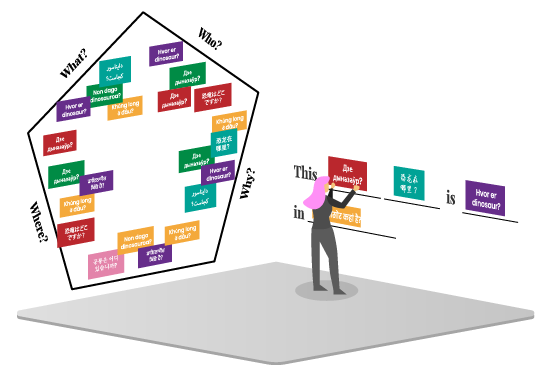
THE NEWS BUILDER: Turning the canvas into a press release
Once the News-Worth Canvas is all filled up, you have the building blocks necessary to create remarkable stories with very clear elements of news-worth. These elements will be the content of an amazing press release with boosted media interest.
The main purpose of a press release is to help the journalist understand why the story is newsworthy. However, if you are not trained as a journalist, it can be difficult to turn all those great ideas into a comprehensive press release that clearly shows all the newsworthy elements. That is why we created a second tool: The News-Builder.
The News-Builder leverages what journalists call the Five 5Ws of Journalism: WHO?, WHAT?, WHERE?, WHEN? and WHERE?. With the News-Builder, you will craft a press release simply by arranging the elements from the News-Worth Canvas into the Five 5Ws and then into an amazing press release.
STEP 1: The Five Ws
The first thing Journalism students learn in university is the existence of something called the Five Ws of Journalism. In the mind of the journalist, the whole story revolves around these five questions: WHO, WHAT, WHEN, WHERE, WHY
That is why the News Builder is shaped like a pentagon with five sides, one for each W. This way, you build up a comprehensible inventory of blocks following the same principles as professional journalists.
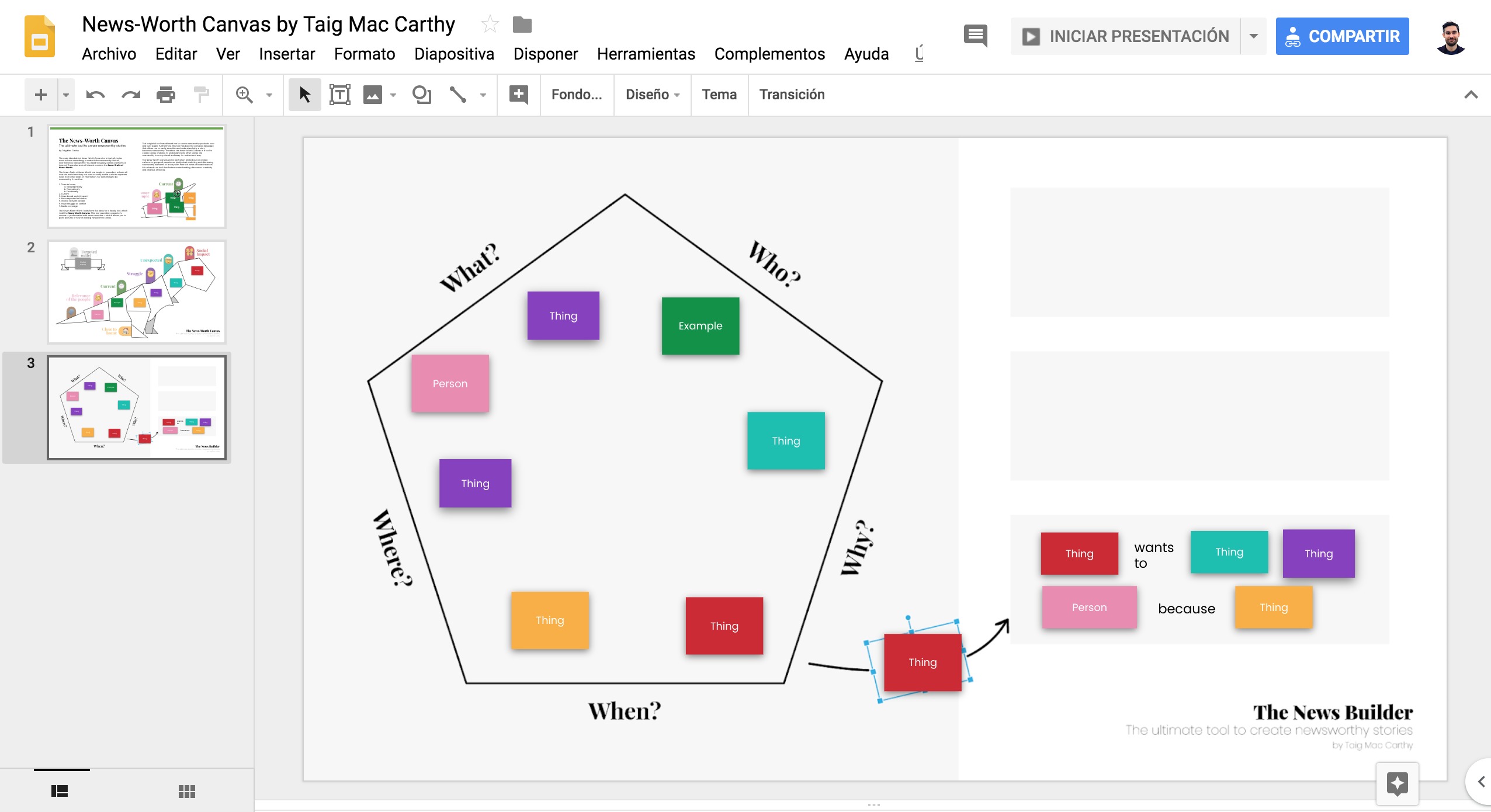
To properly execute this step, you must place the elements from the dinosaur into the five slots of the pentagon. Some elements might fit into two places, in which case you can place them in between or in the middle.
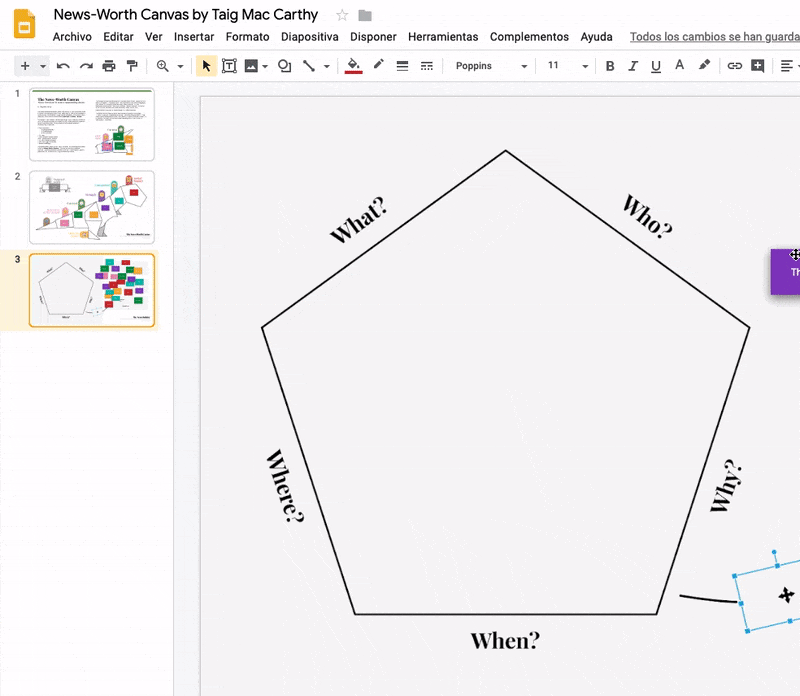
Let’s take a look at each W one by one:
WHERE?
If you tell a friend that you found a dinosaur, the first question they’ll ask is WHERE?
The WHERE is very much related to the Close to home trait of news-worth, but it can be tied to the Broad impact or even the Conflict, depending on the story.
Since it’s a basic element of the story, the WHERE will always be in the heading of every article.
WHEN?
If you see a dinosaur, people want to know WHEN you saw it.
Journalists care very much about WHEN the story takes places. It’s quite self-explanatory: news have to be new. If you found a dinosaur, but it died millions of years ago, it’s suddenly not interesting, right?
Since it’s a basic element of the story, the WHEN will also be in the heading of every article, although it’s usually implied in the verb.
WHAT?
If you are shocked because you saw something amazing, people want to know WHAT you saw. If it was a dinosaur, then it’s pretty remarkable. But if it had been a vending machine it wouldn’t be so awesome, would it?
The WHAT is a central element of the story and it must also appear in the heading of every article.
WHO?
If someone finds a dinosaur, people want to know WHO found it.
You cannot have a story if there are no characters. That is why the WHO will be acknowledged in the heading and the first paragraph of the story.
This is highly related to the trait of Relevance of the people involved, and it can also be tied to the Broad impact trait and the Struggle or conflict, depending on the story.
WHY?
If you ever see a dinosaur, people want to know WHY was the dinosaur was there, or rather WHY you were there.
The reason for something happening is very important. Therefore, the WHY is frequently regarded in the heading and the first paragraph of the press release.
Also, the WHY is very important for you as an entrepreneur, because it gives you the chance to talk about your brand. You can say that you found a dinosaur because you were working in blockchain or whatever your company does. Any trait from the News-Worth Canvas can potentially be an answer to the WHY.
STEP 2: The Heading
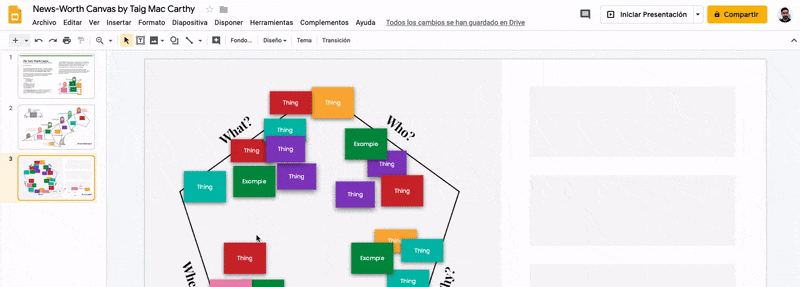
The most important task of a journalist is to look at the story and decide what information goes into the heading. It is that simple. A good journalist understands what readers want and knows how to summarize it in a couple of sentences.
The News-Builder will allow you to create the heading of the press release. The heading is the core of the story. As you will learn in the following pages, the whole press release is basically an extension of the heading.
Furthermore, the role of the press release is dramatically changing and many experts believe that the press release will completely disappear in the following years. According to a study published in 2018, almost half of US-based journalists do not rely on press releases at all. This is most likely because the press release is too long of a read and journalists want to understand immediately why the story is newsworthy.
Once you have all the newsworthy elements in the pentagon, you can simply drag them to build headings and create amazing stories. Think of it as making a collage of newsworthy elements which, arranged in the right order, create stories with great media interest.
Feel free to use the builder in a Google Slides format, if you are working remotely with your team.

Let’s see some examples.
An ex-Tesla engineer created an FDA-compliant cure for hangovers. June 25, 2017. San Francisco Gate.
| W | Element of the story |
|---|---|
| WHAT | created an FDA-compliant cure |
| WHERE | it’s implied that it is the US |
| WHO | Ex-Tesla engineer |
| WHY | for hangovers |
| WHEN | right now implied in the verb |
| W | Element of the story |
|---|---|
| WHAT | Has A Noble Mission |
| WHERE | – |
| WHO | Startup |
| WHY | Helping Unmarried Couples Find Privacy |
| WHEN | right now implied in the verb |
Neon-Blue Wine Gives Spanish Start-Up a Regulatory Headache. March 5 2017. The New York Times.
| W | Element of the story |
|---|---|
| WHAT | Gives Spanish Start-Up a Headache |
| WHERE | Spanish |
| WHO | Neon-Blue Wine |
| WHY | Regulatory issues |
| WHEN | right now implied in the verb |
In all cases, the heading sums up the story in a sentence by focusing on the newsworthy elements and acknowledging the five Ws.
There are many ways of arranging the Five 5Ws. You should try many combinations, such as:
- WHERE WHO created WHAT to WHY
- This WHAT WHO is WHY in WHERE
- WHAT against WHO WHY
- WHERE will be WHAT after WHO WHY
- Your WHAT might be WHY thanks to WHO
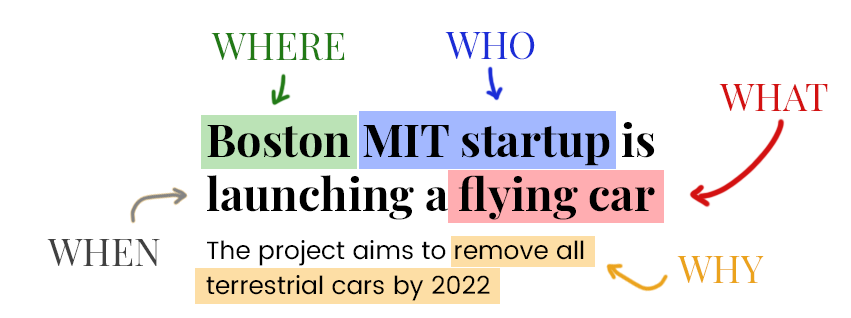
As you can see, it’s really a matter of arranging and rearranging the 5Ws until you come up with a combination that really makes the story stand out. It may take you several attempts until you finally get it, but there is no way of not coming up with something newsworthy if you have performed each step correctly.
TIPS
If something is not in the canvas, it has no business in the press release
The reason for doing the canvas exercise before building the press release is precisely to avoid including information that is not newsworthy.
There is not a module in the News-Worth Canvas for the price, right? Nor for the distribution channels or the mission statement of the company. That is because they have no business in the press release. If something does not directly add up to the Broad Impact, the Conflict, the Proximity or one of the other seven traits of the News-Worth Canvas, it has no value from a journalistic point of view and you should keep it for yourself.
Focus on events, not things
If you want to succeed at achieving free media coverage, you need to understand that press releases — or news articles for that matter, cannot feel like advertising. Your press release needs to tell a story. You must focus on an incident: something happening — as opposed to describing something constant like a company or a product.
We can’t stress enough the importance of this tip enough. When writing your press release, you must be telling a story about a newsworthy event that has been caused by your project, or an event in which your project is involved. But the main focus should be on the event, not the thing itself.
For example, no editor will publish an article about an electric car. But if the story deals with an event such as a new technological development, a traffic incident or a tweet by a relevant person in which an electric car is involved, that will easily make it to the news.
A good trick to help you think like a journalist is to make the product the WHY and the newsworthy event the WHAT, instead of the other way around. This way, you present the newsworthy event as the main thing and the product as the trigger that caused the event — making it easier for the journalist to picture why the story is interesting for their readers. Look at the following example:
❌ Instead of:
Local startup creates a new product that makes people angry
| W | Element of the story |
|---|---|
| WHAT | Creates a product |
| WHERE | Local |
| WHO | Startup |
| WHEN | right now implied in the verb |
| WHY | makes people angry |
✅ Try something like:
Local startup makes people angry with a new product
| W | Element of the story |
|---|---|
| WHAT | Make people angry |
| WHERE | Local |
| WHO | Startup |
| WHEN | right now implied in the verb |
| WHY | To create a product |
You can try many different combinations until you come up with something that works.
Talk about the team in terms of their news-worth
Something worth mentioning is that, when you are writing a press release, you should introduce the people in the team in terms of what is newsworthy. For instance, you should avoid using titles such as CEO or CMO. Instead, you should describe yourself in a way that reinforces the point of the story.
If the story is about your company being the underdog, introducing yourself as a young student may be a good idea. But if you are trying to appear as a leader of opinion, presenting yourself as an experienced engineer would be the best course of action.
It’s also important to bear in mind that projects created by minorities can add up to the news-worth of the story. The same goes for war veterans and other collectives that society cares about, such as people with disabilities.
Veteran with PTSD creates jewelry to empower women. FOX Business. September 25, 2018.
Man with Down syndrome starts million-dollar sock company. Today.com. Jan.24.2018.
So if your project happens to be somehow related to one of those collectives, it may be a good idea to mention this in the press release.
Add tasty sound bites
All media outlets are on the look-out for that one snappy quote or compelling sound bite that will stick in the minds of their viewers, listeners or readers.
A great quote or sound bite on top of an already newsworthy story can see it move close to the front of the newspaper or the top of the news bulletin.
Test it
Don’t wait until you have the perfect press release; get your story out there as soon as possible and improve it with every interaction.
You will be surprised the first time that someone publishes your story. They will fixate on features that you had overlooked, or they might totally ignore something that you thought was very remarkable. They will also come up with nice ways of phrasing some information that you hadn’t thought about.
Chances are you will end up rewriting your press release after someone publishes the first article. So don’t wait until you have the perfect press release; get your story out there.
EDITORIAL GUIDELINES FOR NEWS ARTICLES
Writing news articles is a science, not an art. When we took our first journalism course at university, what surprised us the most is that there is a method to it. Journalism is such an old profession that it has been totally figured out. There are very well defined principles and rules for writing news articles. And once you get it, you are in for the win.
Structure of news articles
Just as humans have a head and a body, news articles have a Heading and a Body. The Heading has no more than 30 words and is written in big and bold letters, while the body is a larger text with normal font size.
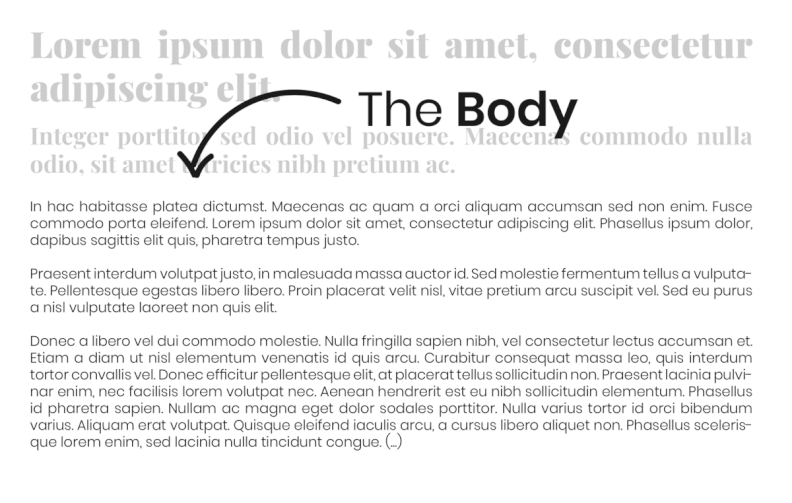
The heading sums up the whole story, so you should include as many of the five Ws as possible; ideally all of them. Headings must be catchy, but also informative, and they should immediately explain why the story is newsworthy.
The Heading
Readers decide if they are going to read an article just by browsing headings, so journalists can’t take the risk of being unclear or uninteresting.
The heading has two parts: the title and the Subtitle.
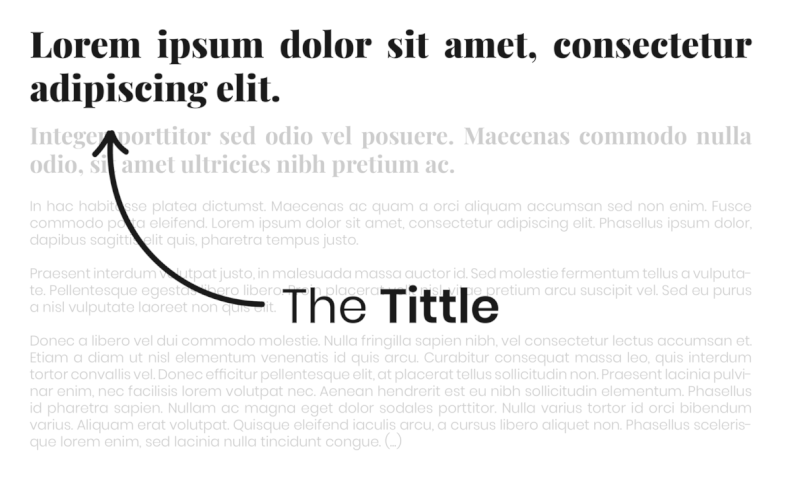
The title is the first sentence that anyone will read. It covers the most newsworthy elements of the article and it’s written in big and bold letters.
The subtitle is the second sentence and it must be written with smaller font size. You can add some extra Ws if you didn’t manage to fit them nicely in the title. Otherwise, it’s common to include quotes in the subtitle.
In many cases, instead of one subtitle, articles include three or four subtitles. This depends on the outlet’s guidelines and it’s a trend that is becoming more and more popular in digital media. It is also possible that the journalist decides not to publish a subheading in the story at all, but you should always provide it in the press release.
Once you have the title and the subtitle, the Body is a piece of cake.
The Body
The body is also divided into two main parts: the 1st paragraph, and the 2nd paragraph. Just as with the heading, the most important information goes in the first paragraph, and less important information goes in the second paragraph. Then, the rest of the text simply adds more information, although most of the audience won’t care to read the whole thing.
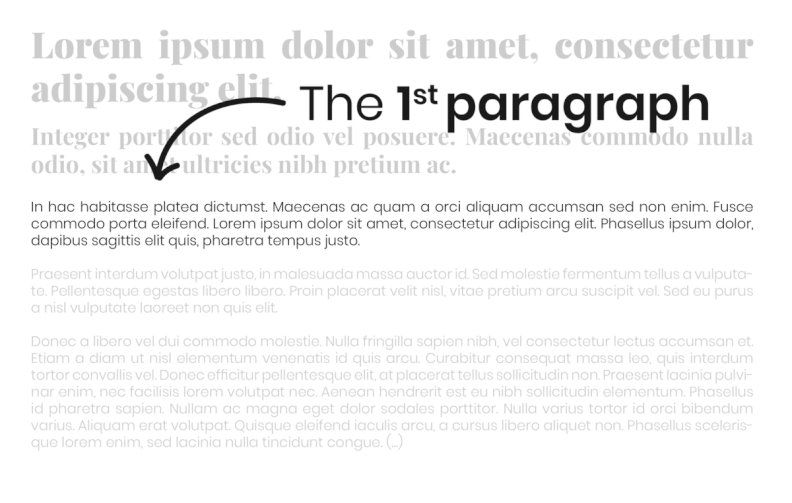
The content of the Rest of the Body is quite a freestyle exercise. You can add extra information at will. But remember: think of your press release as a story, not a product description. Don’t bother including info about the price or the team behind your product unless it’s newsworthy, in which case it should go in the first paragraphs.
Main idea and secondary idea
If you have been paying attention, you might have picked up on a very important pattern: the heading and the body contain the same information — and more specifically, the title contains the same information as the 1st paragraph, and the subtitle contains the same information as the second paragraph.
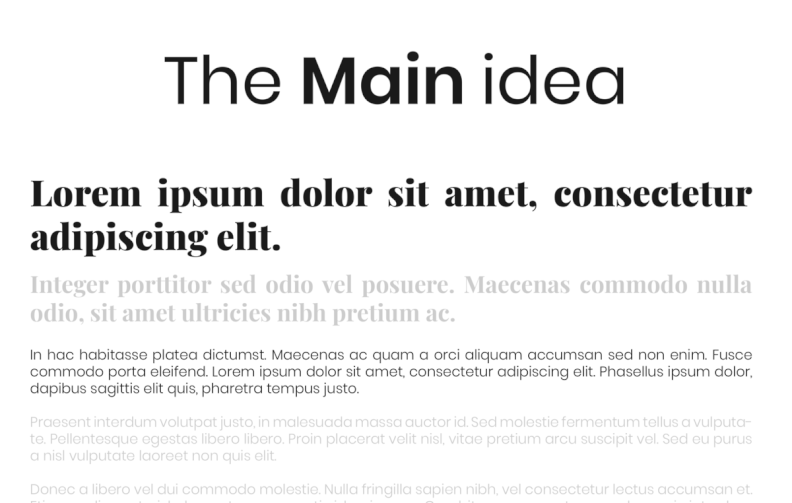
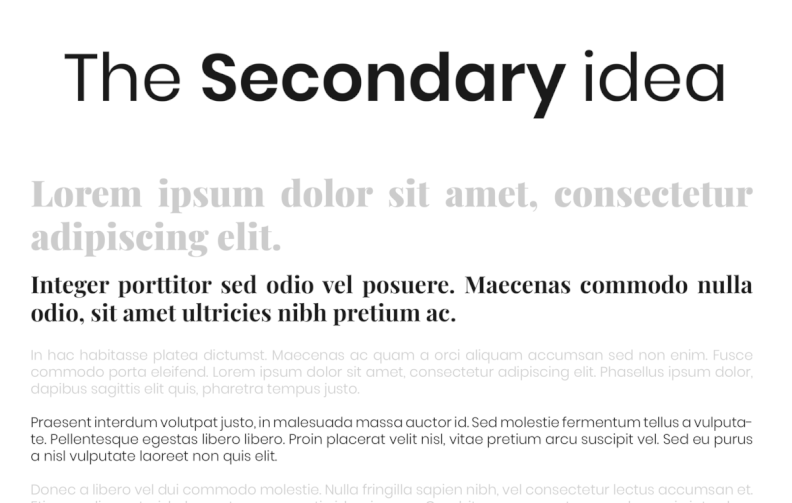
This is why it is so easy to write the press release once you have the title and the subtitle. This structure is called The Inverted Pyramid and it’s an industry standard that will work for media outlets all over the world.
The point of the Inverted Pyramid is to mention the most important, interesting or attention-grabbing elements of a story at the beginning of the article. That means opening up with the 5Ws: WHO, WHEN, WHERE, WHY, WHAT, and HOW, but in a way that it is not just informative, but also eye-catching.
Once you have the heading, writing the first paragraph should be a piece of cake. It’s basically repeating the same info, but adding some extra information.
For instance:
An ex-Tesla engineer created an FDA-compliant cure for hangovers. June 25 2017. San Francisco Gate:
Sisun Lee loved his job as an engineer at Tesla. He had absolutely no intention of quitting and starting his own company. But what started out as a fun side project to find a cure for hangovers has grown so big, he felt he had to quit his job this week and launch a company. On July 5, his startup Morning Recovery, will be open for business, where it will sell an FDA-compliant hangover cure.
As you can see, the 1st paragraph repeats the same information as the title, and it adds some details. Otherwise, the first paragraph is pretty much the same information as the heading.
Likewise, the second paragraph is a zoom-in on the subheading. Just as the first paragraph repeats the heading, the second paragraph has the same information as the subheading.
Rest of the text
From the third paragraph on, you can add your personal touch. For instance, you can give a voice to the people involved in the story. You can quote yourself saying something catchy that reinforces the main idea of the article. The 3rd paragraph is usually where quotes go, giving you a chance to emphasize on the subjective aspects of the story and adding up to the conflict, add some emotional drama or even comedy — whatever suits the story best. Like in this case:
But instead suffering from hangovers, his Korean buddies turned him onto the hangover cure drinks that are popular there. Those drinks worked for him, Lee told Business Insider. “The next day, I woke up feeling great”.
Font family
Regarding the font family, use something ordinary like Arial, Helvetica or Verdana, both for the title and the body. The color should be black over a white background. Pretty straightforward.
Don’t try to be artsy with the design — it will do you no good. 78% of journalists don’t like emails and press releases with emojis, according to a survey from MuckRack. You need to make it as easy as possible for the journalist to copy/paste, so adding custom fonts and colors is only going to complicate the task.
Font size
About the size, the heading should be way bigger than the body and in bold letters, while the subheading would be somewhere in the middle. I would recommend the following font sizes:
| Section | Font size |
|---|---|
| Heading | 40 to 50 pixels |
| Subheading | 20 to 30 pixels |
| Paragraphs | 14 to 18 pixels |
Here is a press release that was done by someone in my team:
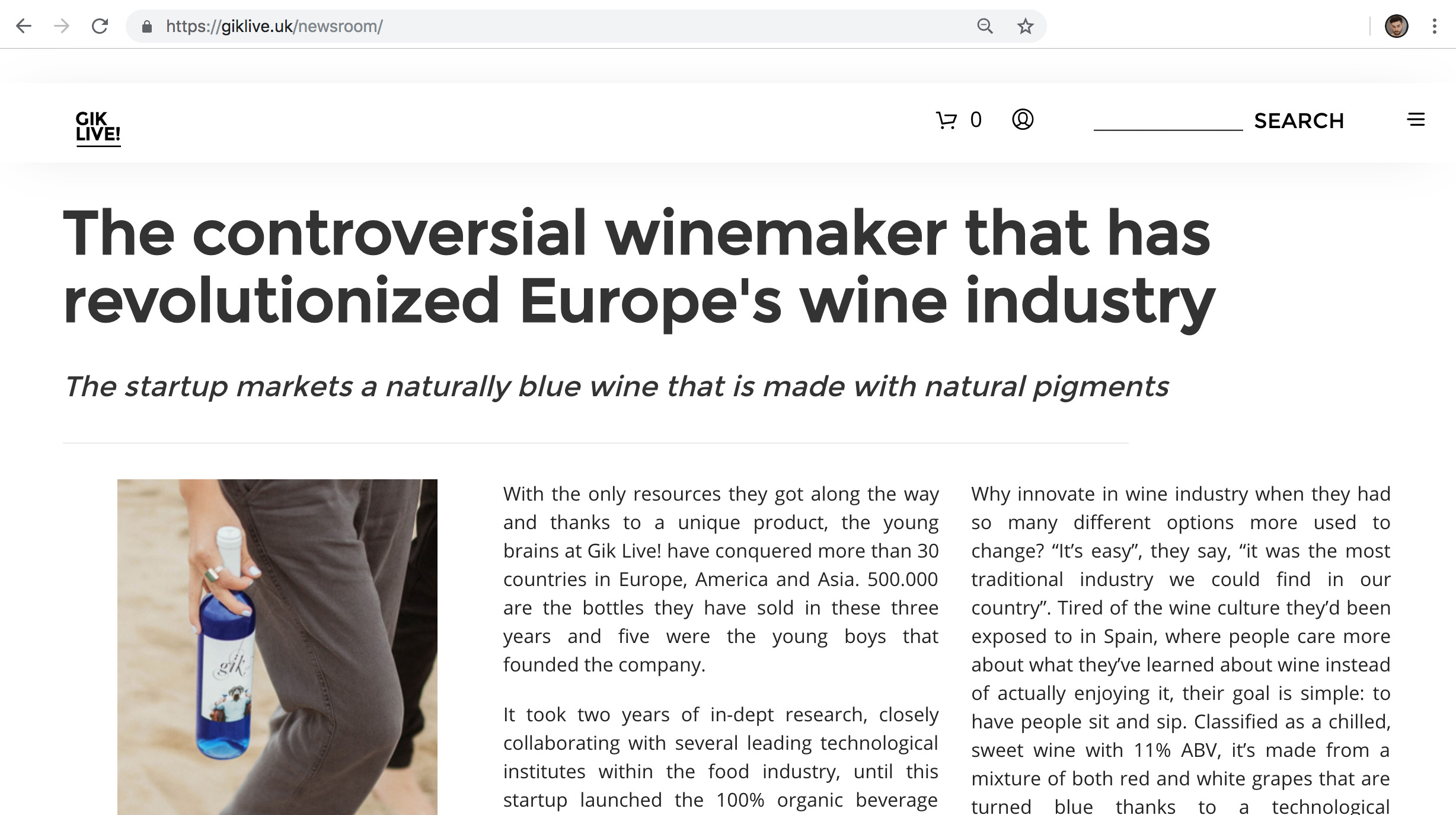
This is the styling in CSS. Your designer should know:
h1 {font-size: 1.6em;
font-style: normal;
font-weight: 700;}
h2 {font-size: 1.2em;
font-style: italic;
font-weight:400;}
p {font-size: 1em;
font-style: normal;
font-weight: 400;}
Length
Articles’ length varies a lot, but I recommend you to stick to the following guidelines to avoid making it too long or too short.
| Section | Number of words | Content |
|---|---|---|
| Heading | 10 to 20 | Main Ws |
| Subheading | 10 to 20 | Secondary Ws |
| First paragraph | 200 to 350 | Same as heading |
| Second paragraph | 200 to 350 | Same as subheading |
| Third paragraph | 350 to 600 | Further info |
| Picture | No words | Visual explanation |
| Fourth paragraph | 350 to 600 | Further info |
| Fifth paragraph | 350 to 600 | Further info |
| Contact info | 3 to 10 | Name, phone, email |
Quotes
At universities, journalists are trained to refrain from including their own opinions in news articles. They cannot say that your product is good or bad. Instead, they must interview people with different opinions and use their quotes.
Quotes are usually included in the second or the third paragraph of the press release, but they are frequently added to the title, especially when the WHO is the main element of news-worth in that story.
For instance:
Tiny Device Is a ‘Huge Advance’ for Treatment of Severe Heart Failure. 2018/09/23 New York Times
As you can see, the words Huge Advance are quoted because the writer should refrain from making those claims. This also happens in the body of the article:
“It’s a huge advance,” said Dr. Howard Herrmann, the director of interventional cardiology at the University of Pennsylvania, which enrolled a few patients in the study. “It shows we can treat and improve the outcomes of a disease in a way we never thought we could.”
The quotes can also be stated without quotation marks if it’s written in such a way that it’s clear that it’s a claim done by another person.
This New Hampshire Startup Says It’s Building The iPod Of Robots. 2018/07/17. Forbes
Anyway, journalists cannot reflect their own opinions in their articles — they must stick to the facts. This is why quoting people is the only way to add opinions to the story, making the characters even a bigger part of it.
TEMPLATES
All press releases follow the same principles. So even if there is no template that magically works for every story, there are a few combinations that may serve as inspiration or a place to quick-start your press release from.
Please don’t let these templates ruin your creativity. Each story is unique and the combinations of newsworthy elements are infinite. So mess around with your own ideas and bounce them around with people in your team before resorting to the templates.
| Section | Content |
|---|---|
| Heading | WHERE WHO (your company) created newsworthy-WHAT (your product) |
| Subheading | The project aims to WHY |
| First paragraph | The WHERE WHO-with-more-words has just created a WHAT-with-more-words that explanation-on-why-the-WHAT-is-newsworthy |
| Second paragraph | “We want to emotional-WHY”, explains WHO. As it turns out, more-information-on-the issue,-ideally-with-facts-and-figures. |
| Rest of the text | Further information on WHY and WHAT |
| Picture | Showing the newsworthy WHAT |
| Contact info | Name, email, and telephone number |
Let’s see how an article written with the aforementioned template would look:
Boston MIT startup is launching a flying car
The project aims to remove all terrestrial cars by 2022The Boston startup FLYCAR with the help of the MIT has just created a vehicle that can transport passengers through the air and costs the same as a regular car.
”Our dream is to walk across the street without worrying about green or red lights”, explains John Doe, senior engineer at the company. As it turns out, more than a 123,123 cars ride a street on average, with a growing congestion rate of 123% in urban areas. “We want to free the streets from cars and reclaim cities for pedestrians”, further comments the 24 year old Bostonian.
As you can see, you should only focus on information that is essential to understand the event at hand, not the company itself.
In this example, we don’t talk about the patents or the founding team, but we mention WHERE and WHY the story is happening. About the product, we only mention facts that help understand why the story is newsworthy. I wouldn’t explain how the car flies, but I do mention that it is cheap, because that is what makes its impact over a broad audience.
Always focus on the elements that make the story newsworthy. Think like a journalist, not like a founder. You don’t want to explain the product, you want to help the journalist identify the elements of the story that is newsworthy. That is what the press release is for.
Let’s try with another template:
| Section | Content |
|---|---|
| Heading | This WHERE WHO (your company) is WHY |
| Subheading | Their WHAT (your product) WHEN |
| First paragraph | In WHERE-with-more-words WHO-with-more-words is WHAT that will WHY-with-more-words |
| Second paragraph | Their WHAT-with-more-words that will “emotional-WHY”, explains WHO. As it turns out, more-information-on-the issue,-ideally-with-facts-and-figures. |
| Rest of the text | Further information on WHY and WHAT |
| Picture | Showing the newsworthy WHAT |
| Contact info | Name, email, and telephone number |
This is what the same article would look like written with the second template:
This Boston Startup Wants To Kill Your Car
The flying vehicle prototype has just been launched and it will be in stores by end of the yearIn an industrial park in Boston, Massachusetts, John Doe is putting the final touches to a flying electric vehicle that he believes will be the end of all terrestrial transportation.
The flying car, which costs no more than a regular car, will “put an end to the monopoly of cars in our streets”, as explains John Doe, 47, co-founder of FLYCAR and the former lead product manager for the Tesla Model 3.
As it turns out, more than a 123,123 cars ride a street on average with a growing congestion rate of 123% in urban areas. “We want to free the streets from cars and reclaim cities for pedestrians”, further comments the entrepreneur.
It’s really a matter of rearranging the 5Ws in a way that makes your story as newsworthy as possible.
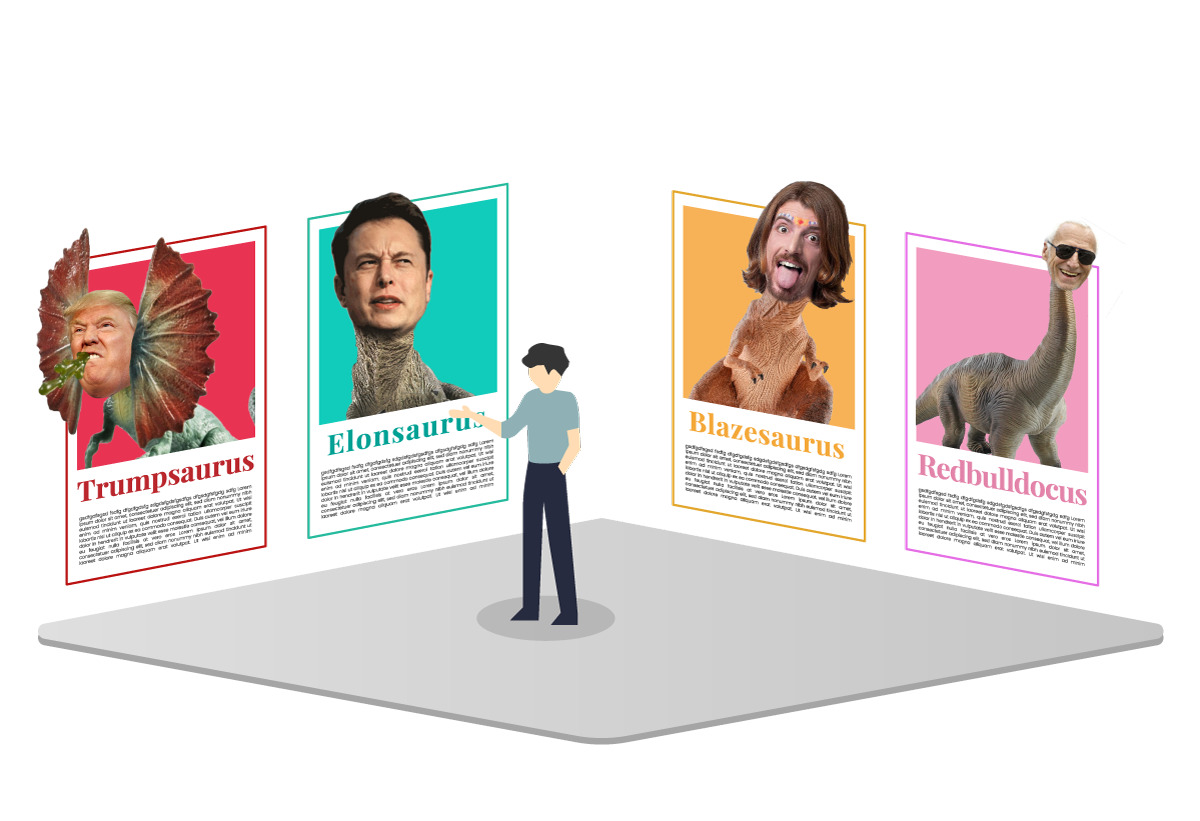
DINOSAURS: Success cases in the media landscape
In the following pages, we have sketched out 8 dinosaurs built on major success cases in the media landscape of this century. We have translated these example into the language of the News-Worth Canvas to make the concepts comparable, easy to understand, and applicable.
These examples are very different from one another, but they share certain patterns. That is why we call them dinosaurs. The dinosaurs described hereafter should help you understand News-Worth Dynamics and serve as a source of inspiration for your own work, as well as clarifying some of the concepts laid out in the previous pages.
New dinosaurs will no doubt new dinosaurs will emerge over time. Our goal in defining and describing these dinosaurs is to recast well-known concepts into a standardized format —the News-Worth Canvas— so that they are immediately useful in your own work.
The Elonsaurus
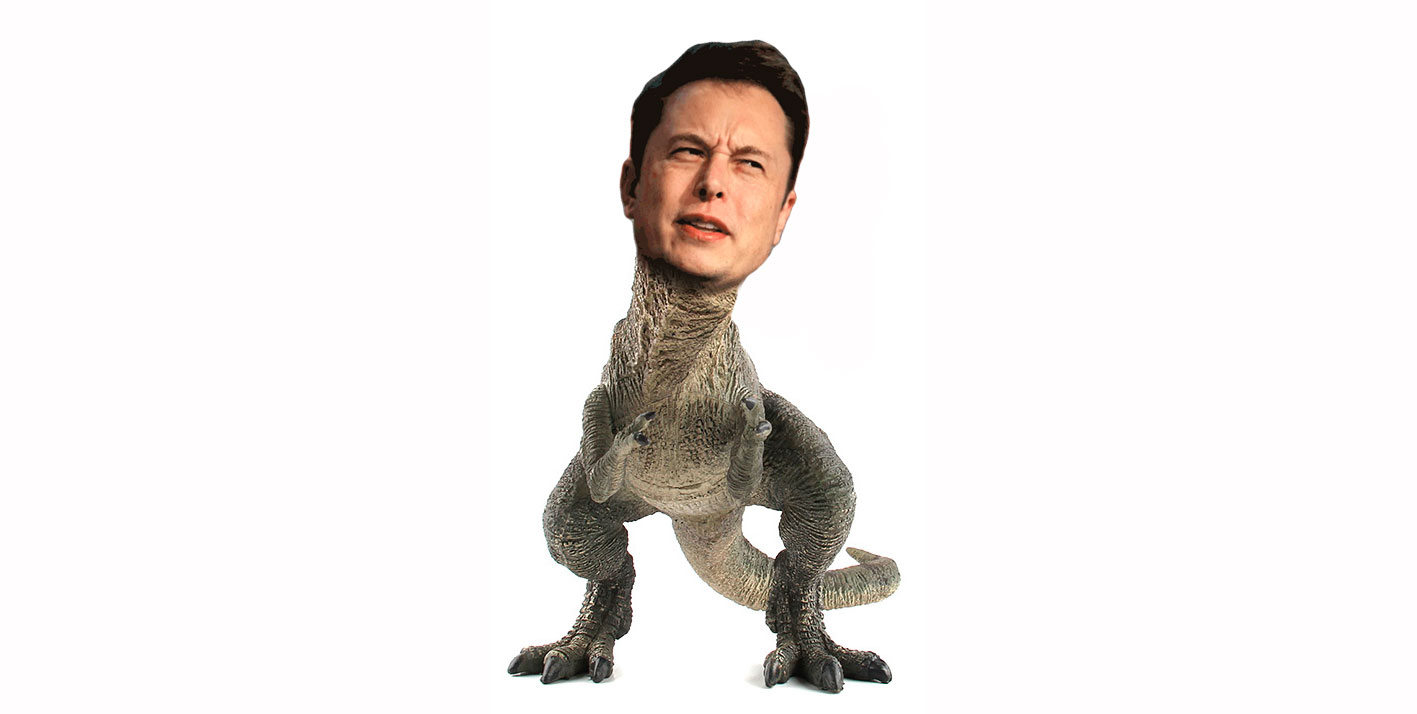
The Elonsaurus is a large carnivore that claims to do something very newsworthy but actually delivers something else instead. Thanks to this distinctive behavior, the Elonsaurus earns free media coverage and ends up selling a lot of the not-newsworthy stuff.
The Elonsaurus was named after the Chief Executive Office of Tesla Motor, a company with a $0 advertising policy that became successful due to media coverage. The value that investors place in the brand is reportedly based on the fact that Tesla is able to draw organic conversations and excitement surrounding their products.
When Elon Musk started Tesla, he claimed to be creating a super affordable electric car so as to help the whole world switch to electric and therefore save the planet. He was a disruptive innovator battling against the bigger old evil gas car corporations. This scenario hits many of the criteria of news-worth: it has a broad social impact, as it affects a wide range of people; there is conflict and it’s happening close to home since Tesla’s affordable electric cars could ride the streets of your town — you could easily drive one yourself.
Take a look at the story through the lens of the News-Worth Canvas:
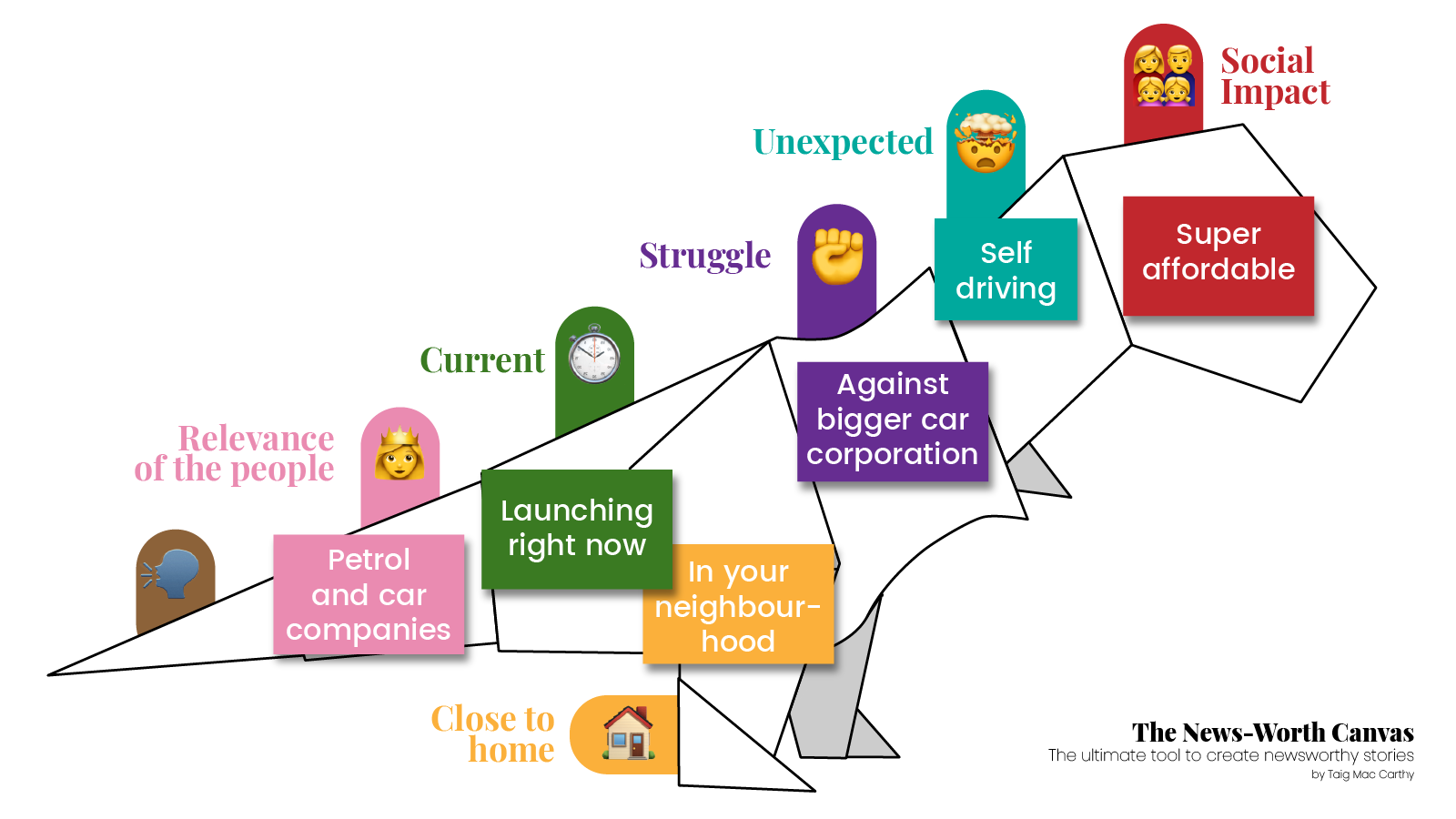
But then, Tesla delivered a high-end luxury car instead of the mass-market affordable car they had promised. This luxurious car is awesome, yes, but it’s not newsworthy because it lacks most of the elements previously mentioned.
A fancy deluxe electric car has a far narrower social impact because it only affects wealthy people. As for conflict, now the story is about a rich white man making expensive cars for rich people, and that’s not precisely challenging the status quo. And most importantly: it’s not close to home anymore, because unless you live in Palo Alto, there are few chances you’d see one — and let’s face it: let alone afford one.
This is what the Elonsaurus is all about: claiming to be doing something newsworthy, and then capitalizing on the media attention to sell something else. Does Elon Musk apply this strategy consciously to get media coverage and achieve quick growth, or does he genuinely fail at developing an affordable car? That’s not for us to judge. It could be both. The important thing is that it works.
In 2015 alone, Tesla sold 84,000 luxurious electric cars and turned themselves into a worldwide recognizable brand — with a $0 advertising policy. Indeed, the car company had no advertising team, no CMO, and no ad agency, and yet they managed to achieve quick growth in a very competitive market. That is what a dinosaur does to a marketing strategy.
Let’s take a closer look at Tesla’s advertising and marketing strategy (or lack thereof) to understand the power of a dinosaur in action.
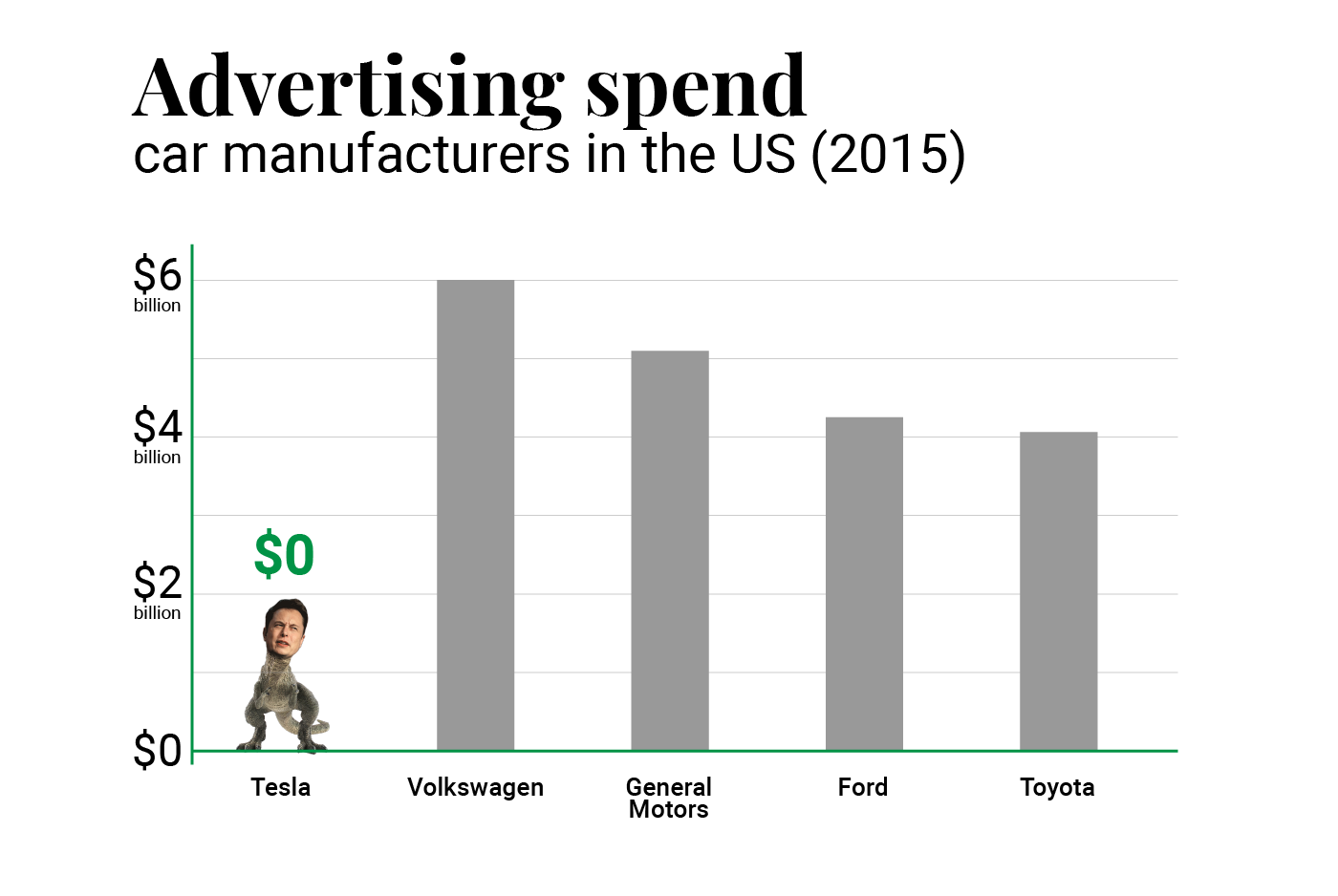
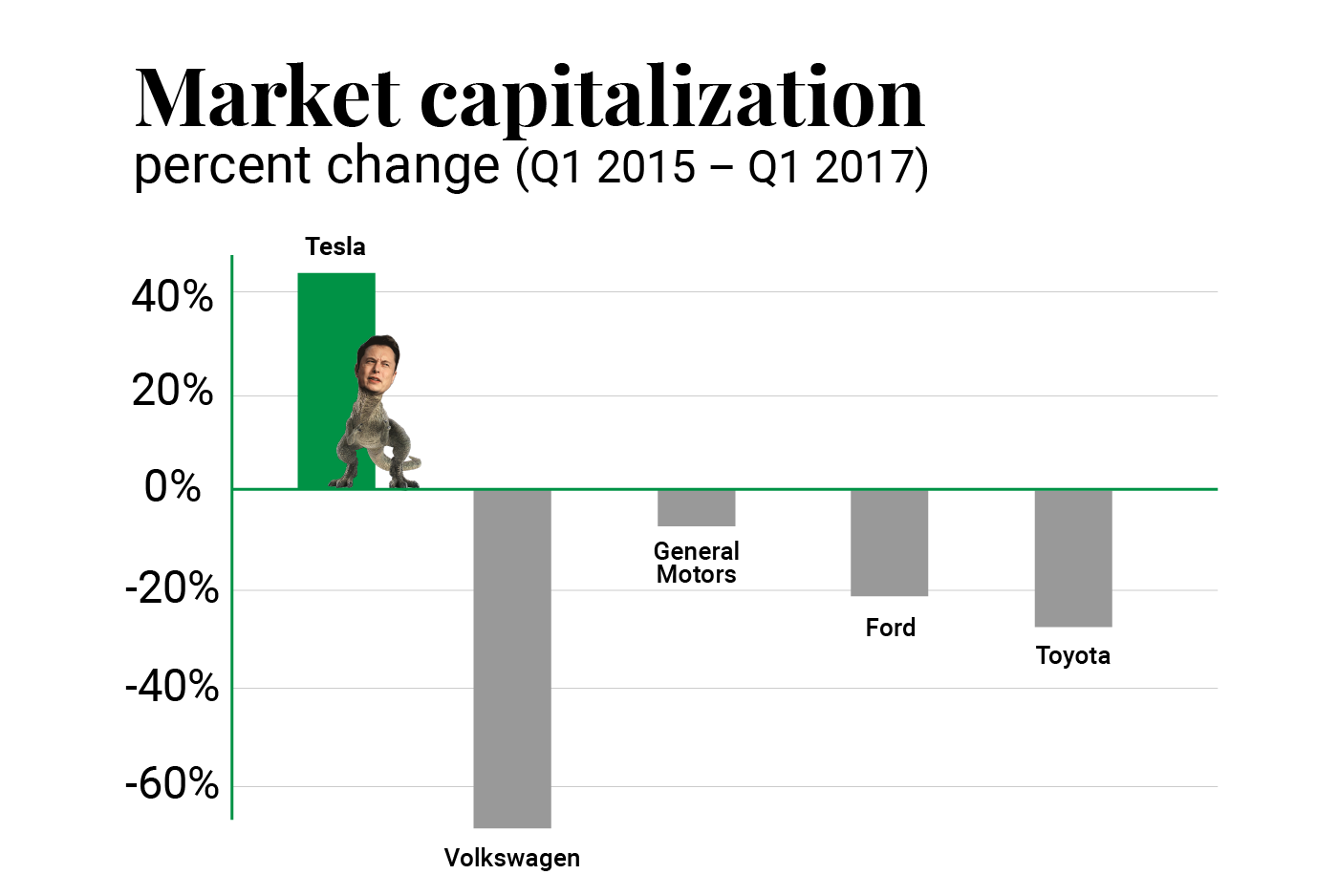
Anyone can replicate this strategy in many ways. Amazon did something similar in 2013, when they gained a lot of free media coverage thanks to “delivery drones” that were never going to happen. And politicians from all over the world get elected by making promises that later they don’t fulfill. In fact, Elon Musk himself has replicated his own strategy on multiple occasions — in ways that continue to surprise us.
After Tesla Motors, Elon Musk created a company called The Boring Company under the claim that it would build a network of underground tunnels under Los Angeles. But then he sold hats and flamethrowers instead. If you think this is a joke, please note that The Boring Company has sold 50,000 hats at $20 each (bringing in $1 million) and 20,000 flamethrowers at $500 a pop (bringing in $10,000,000).
Swag from Elon Musk’s Boring Company hits eBay for thousands of dollars. 5 Feb 2018. CNBC.
Elon Musk delivers first 1,000 flamethrowers, value rockets on eBay. June 11, 2018. USA TODAY.
And to take it even further, Elon Musk revealed his plans to launch a Tesla-branded tequila in 2018 – which will surely be a source of income for the company, even if the affordable electric car that got us interested in the first place is far away from happening:
Elon Musk says ‘Teslaquila’ is ‘coming soon’ as Tesla files trademark. 018/oct/12. The Guardian (UK)
You can also replicate this strategy. For instance, if you are selling cold brew coffee, you might say that you are developing a coffee that prevents memory loss. Such a claim might sound crazy, but why not? It’s definitely less crazy that saying:
You are surely wondering: but what happens when you don’t deliver? Don’t do people get disappointed or even angry at you? As it turns out, not necessarily. There are many ways of promising something and then delivering something else instead, without people getting upset about it. For instance, you may excuse yourself saying that the non-newsworthy product is a step towards achieving the newsworthy product that you are promising. This way, it doesn’t seem like you were lying, you simply failed to deliver — and that is not the same as lying.
This is literally what Elon Musk explained in a product launch event in 2016:
We finally come to step three, the final step in the Musk plan, which is a mass market affordable, electric car. It was only possible to do that after going through the prior steps. And we are here.
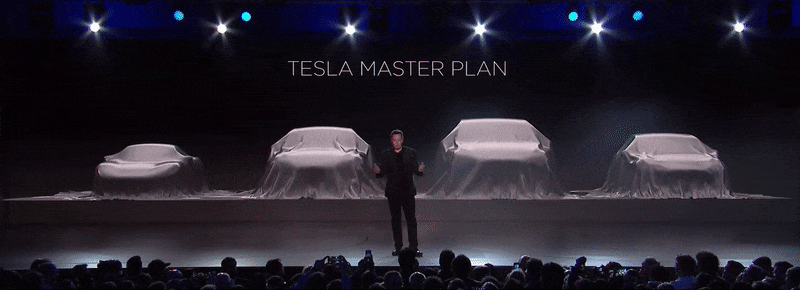
It’s worth mentioning that for this strategy to play off the product that you actually deliver — instead of the newsworthy one — must be a product that people want to buy, like hats, flamethrowers, luxury cars or tequila. Otherwise, the press coverage will not translate into sales. But then again, it’s also a great tool for market validation. If you achieve great coverage for your company and then people don’t buy what you are selling, then you know that it’s not good business.
The Blazesaurus

The Blazesaurus is a humble dinosaur that becomes famous and well-liked for challenging bigger animals and questioning the status quo.
The specimen is named after Blaze Arizanov, co-founder of StayUncle. This Indian startup was founded by a Macedonian redhead and an Indian salesman that moved to New Delhi to promote an idea that appeared immoral, radical and controversial for India: hotels for unmarried couples. And in just three years, StayUncle expanded to more than 800 hotels, with $3.5 million in turnover and a user repetition rate above 30%.
The Blazesaurus consists of somehow challenging the status quo, and therefore creating a story that becomes newsworthy for its social implications. In India, there is a lot of hate regarding this topic. The most traditional sectors of society strongly oppose pre-marital sex. So when Blaze and his co-founder Sanchit started their company, they were flooded with hate comments and criticism. They were threatened by fundamentalists and online trolls.
You might think that this is a bad thing, but strong opposition is an awesome opportunity to become newsworthy. Indeed, the idea was controversial enough to make their company thrive with a non-existing marketing budget.
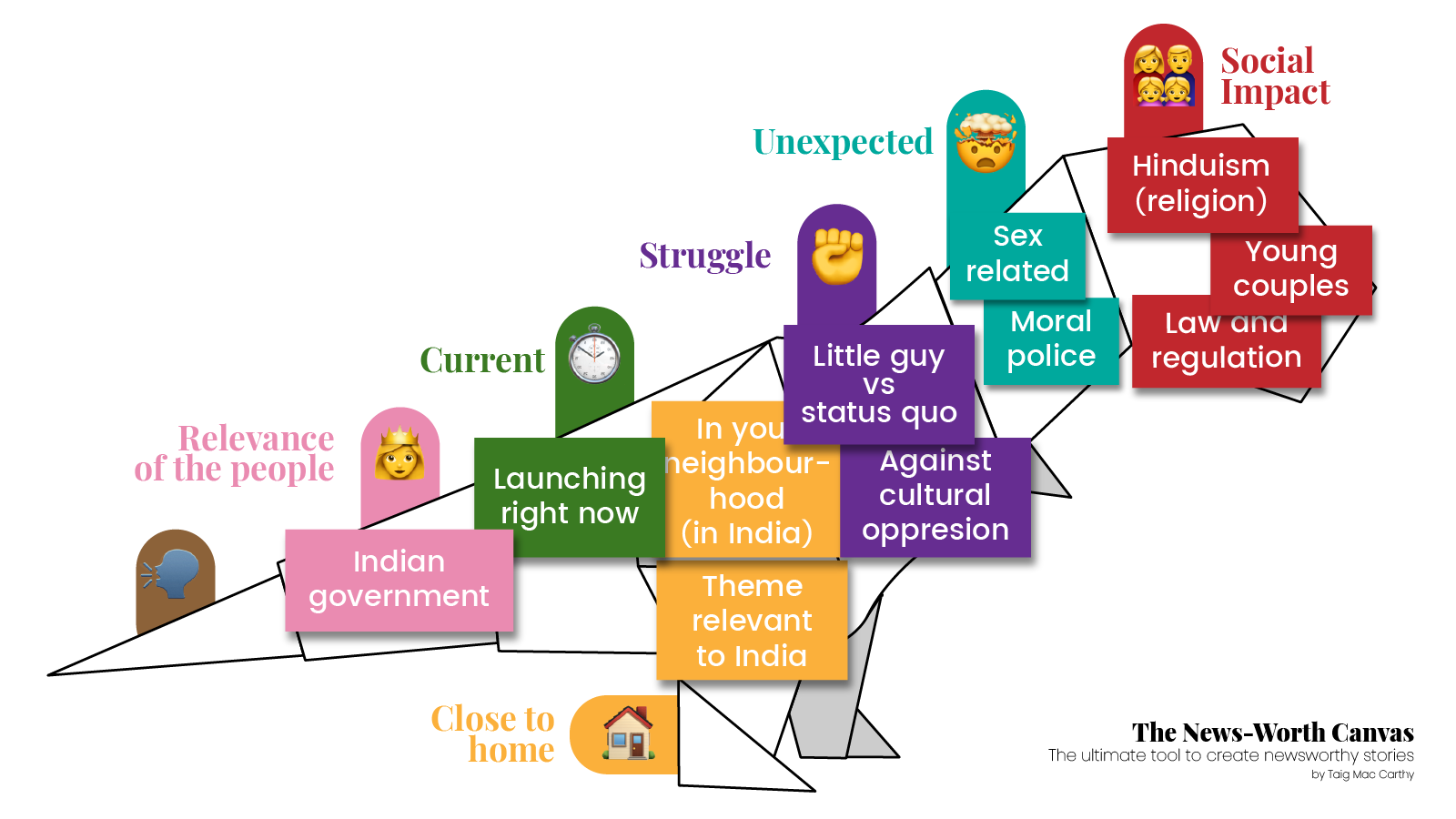
When I asked the founders what their major milestone on the path to success was, they quickly remembered April of 2016 when they “starred” for the first time in a newspaper:
According to Blaze, that was the day on which they became a business. On the same day, many Indian nationwide outlets published the story, and in the following weeks, several international outlets such as; Discovery Channel or BBC called them to publish stories such as:
Hotel rooms for hire: Young lovers get a break in India. 06 Oct 2016. BBC News.
The Uncles of Good Sex. July 20 2018. VICE.
Why are unmarried couples seeking a room in hotels seen as immoral.APRIL 22 2016. The Hindu.
Before that, StayUncle only did street marketing, which is exhausting and does not provide a significant reach. But thanks to the media coverage, StayUncle grew from around 10 monthly transactions to 100, and kept doubling their metrics at that rate for 3 months.
The story of the underdog challenging the establishment falls into the narrative of David vs. Goliath, a biblical archetype that Hollywood and media outlets love exploiting. So most articles covering StayUncle’s story featured them as the hero, battling against the most traditional stakeholders of Indian society. And Blaze Arizanov sure got the hang of it.
The team decided that their whole marketing strategy would revolve around being social activists supporting progressive topics in India to get purposely into trouble as much as they could. According to the founders, the topic of rooms for unmarried couples that made them famous wore off after a while. It stopped being current. So they needed “another hook”. But Blaze had another controversial idea: promoting StayUncle with images featuring Indian divinities.
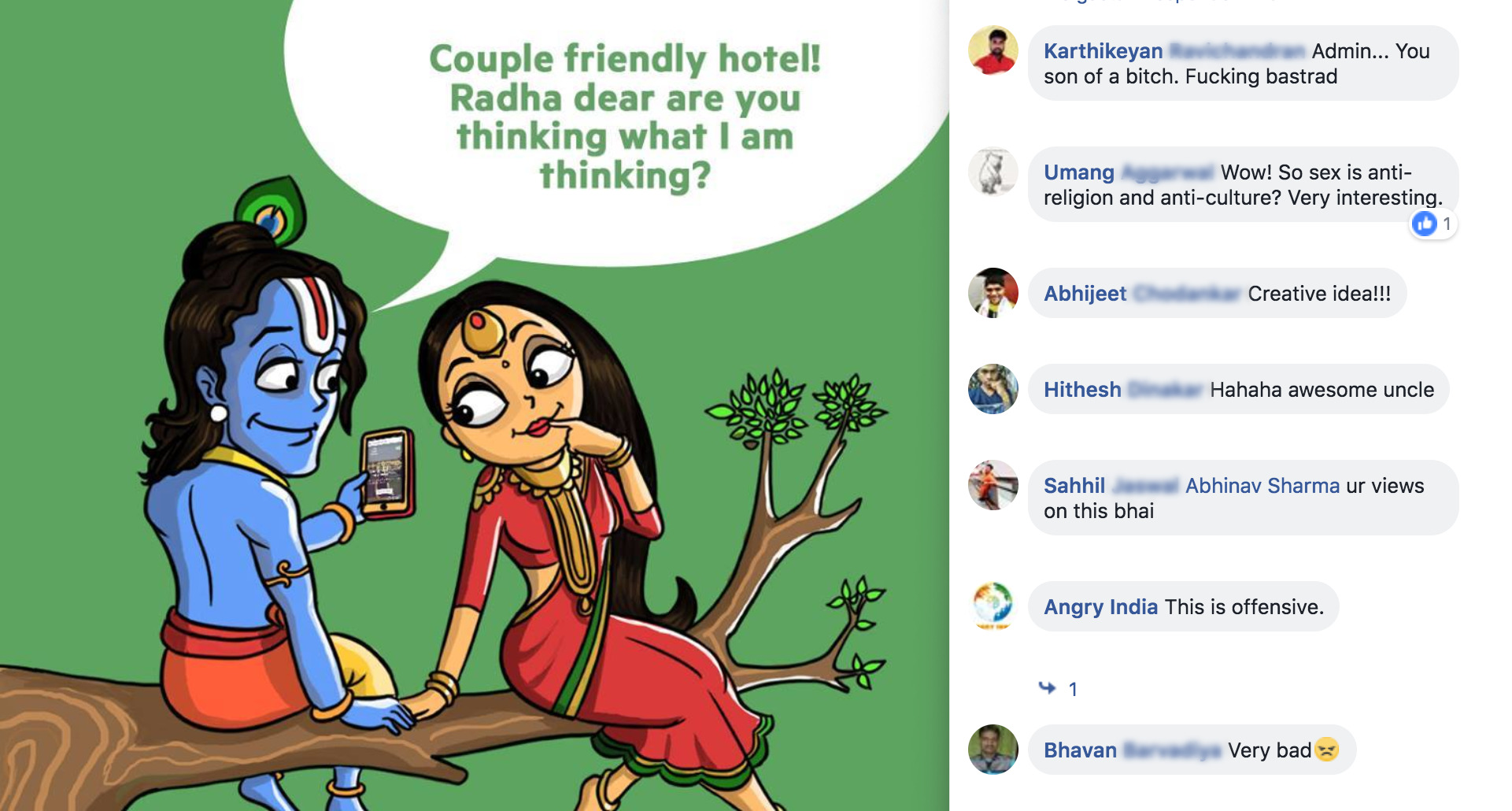
And as you can see by the comments, the campaign sparked off the discussion, drawing love, hate and tons of attention and free clicks to their website, as well as a second wave of media coverage.
In late 2016, StayUncle was targeted by a series of cyber attacks that made their website repeatedly go down. So they contacted journalists to let them know about the attacks, and many newspapers published stories that got them even more media attention:
For Blaze Arizanov and his team, coming up with newsworthy stories has become a process. Every 3 to 4 months they do something radical: “whenever StayUncle’s Google Alerts were going down, it was time to think up something new”, explained Blaze. In April of 2018, StayUncle dropped another controversial bomb to get the company into news outlets again. Take a look at the article that Reuters published:
Fake Indian website offering girls for ‘every taste’ stirs up a storm. APRIL 4, 2018. REUTERS.:
A fake website offering girls to cater for “every taste and pocket” clocked up more than 1,000 subscribers on its first day, highlighting the challenge of tackling sex trafficking in India.
It worked like a charm: the following two days were buzzing with news about this unusual campaign run by a small company offering love stays to couples.
When we contacted Blaze and I told him about our own entrepreneurial background, he said:
It looks like angering traditionally-minded people turned out well for the both of us.
Indeed it did.
The Trumpsaurus
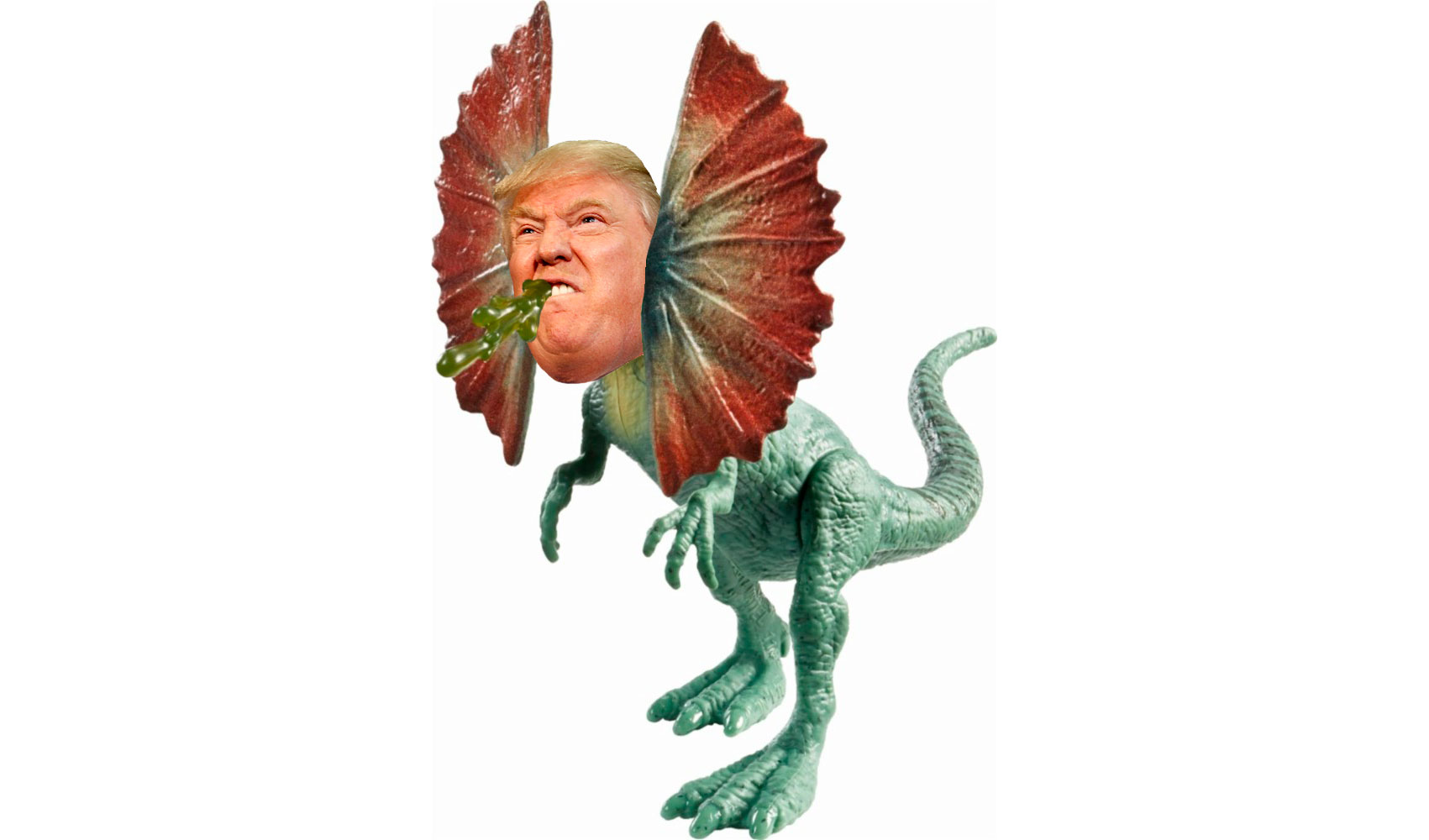
This dinosaur causes outrageous scenes to gain people’s attention and then he delivers his product, repeating this process over and over again to achieve great awareness and grow its influence.
In January of 2016, Kanye West and Wiz Khalifa had an argument on Twitter. Well, I wouldn’t really call it an argument, because Kanye was the only one tweeting. And apparently, Kanye only went off because he thought Wiz was tweeting about his wife: Kim Kardashian – and he wasn’t.
Here are some of the highlights of the discussion:




Regardless of how stupid the event was, thanks to all the media coverage, Wiz Khalifa gained 61,000 new followers on that day alone. In that same timespan, Kanye gained 172,000 followers. At the peak of the conversation, Kanye West was mentioned in 88,000 tweets PER MINUTE.
This is how the 45th President of the United States, Donald Trump, manages to stay relevant. He just says outrageous stuff that is so wild that journalists can’t help but cover it. Newspapers from all over the world published stories about Donald Trump’s crazy adventures during the presidential campaign of 2016, making his influence grow and grow.
I was not surprised to learn that Donald Trump had one of the lowest advertising budgets during his presidential campaign. He spent less on television advertising than any other major candidate, as you can see in the following chart:
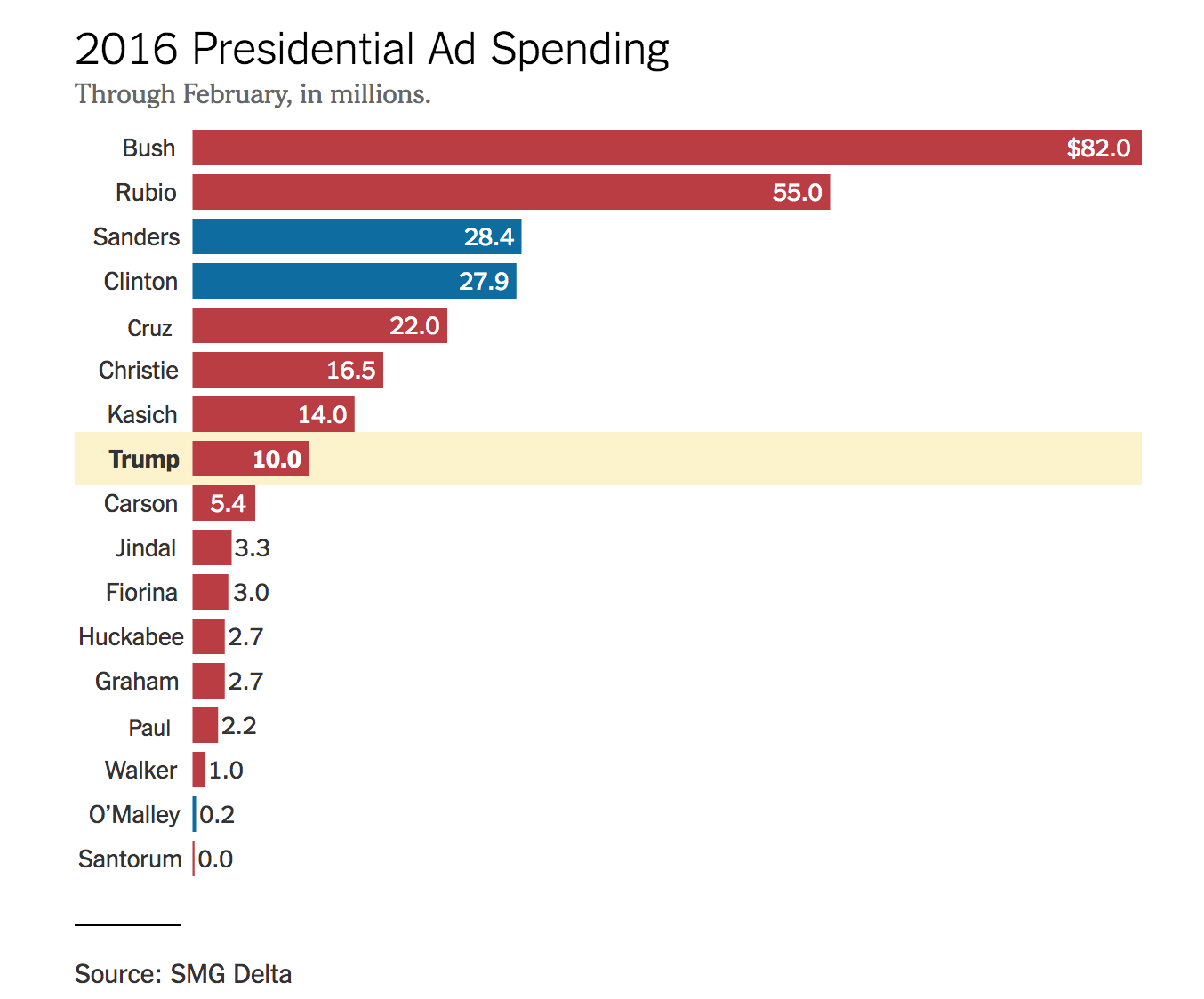
Despite his reduced budget, he earned a lot of media coverage. The chief analyst of a major media observatory said that Trump had no weakness in any of the media segments. In other words: he was strong in every type of media, from television to Twitter — and he achieved that with the lowest marketing budget. Let that thought sink in.
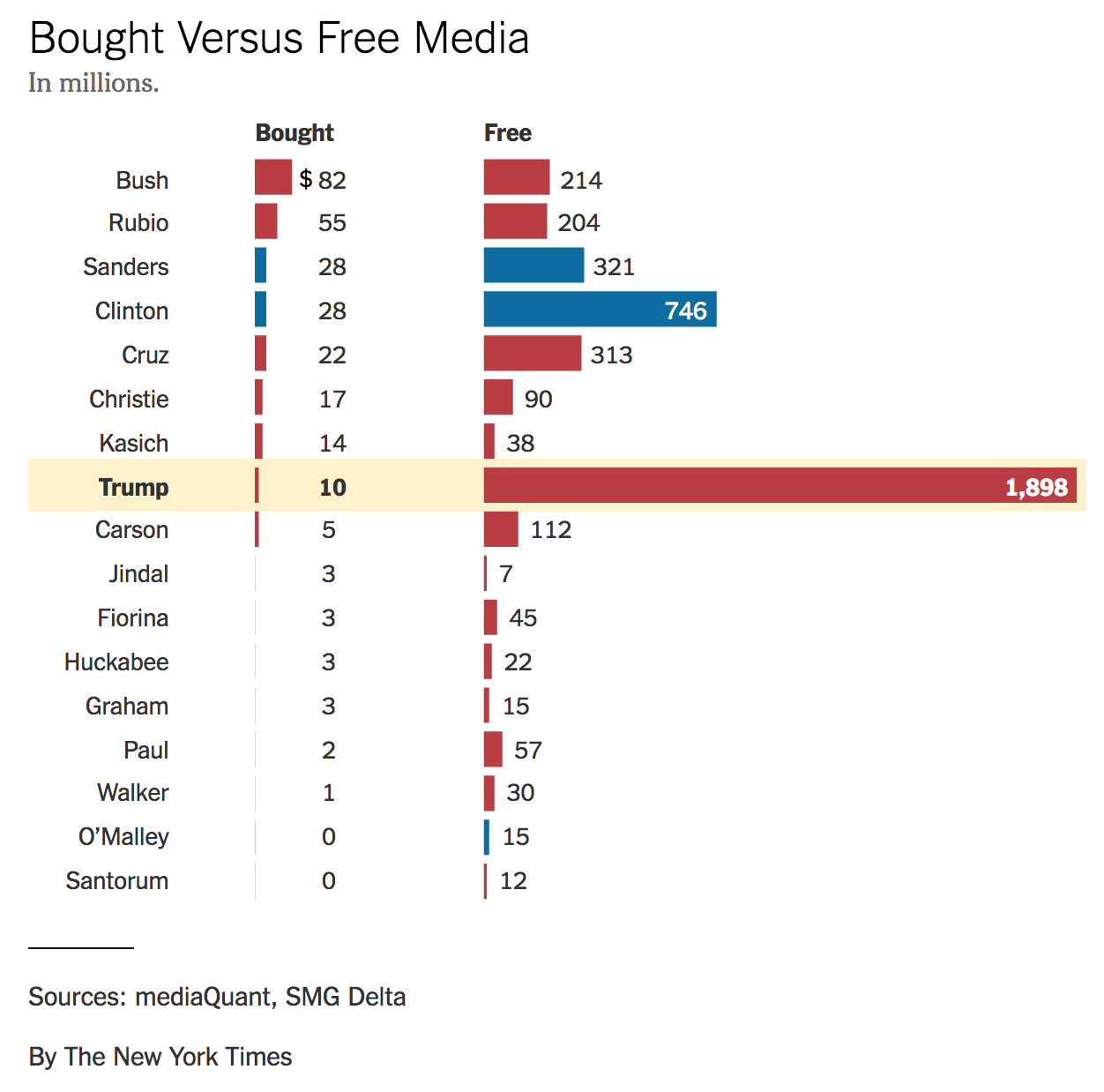
How did Trump achieve this? Through creating dinosaurs. Donald Trump is a dinosaur machine. And all his dinosaurs follow the same pattern: he involves relevant people, he takes over a topic with a broad impact and then he does something unexpected or bizarre, creating a story that also has a generous sprinkling of conflict.
Let’s analyze one of his dinosaurs with the News-Worth Canvas framework. Do you remember that time that Trump made fun of a disabled journalist during a political speech? Here is the story that The Washington Post wrote:
Meryl Streep was right. Donald Trump did mock a disabled reporter.
Now, let’s see what that story looks like when analyzed through the News-Worth Canvas:
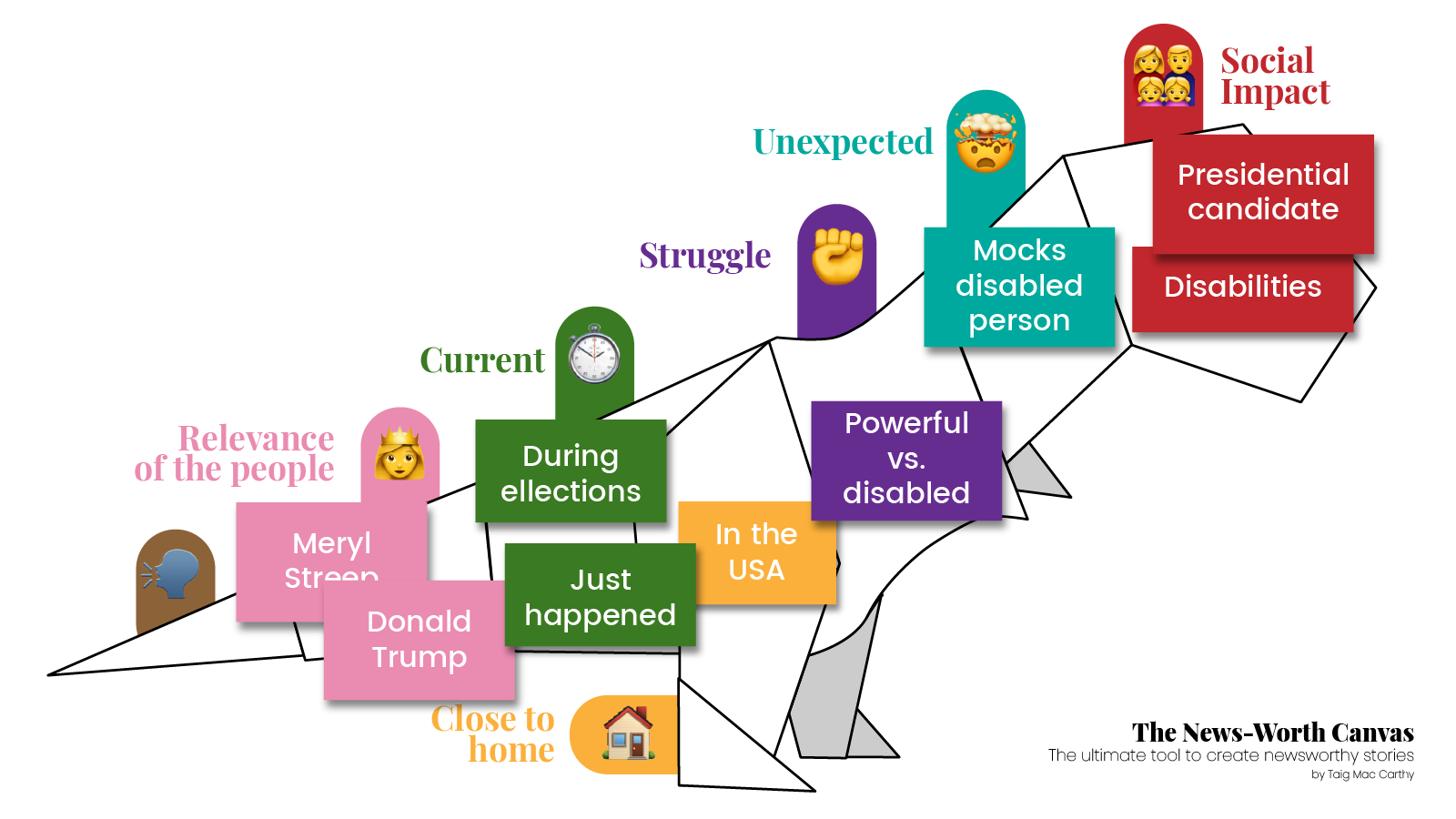
As you can see, the story hits many of the 7 Traits of News-Worth: it has a broader impact since we are talking about a man that could be your next president. It involves disabilities, an issue that many people care about. It is evidently unexpected because you are not used to seeing a grown-up mimicking a disabled person in front of a crowd. And it has Conflict because there is a clash between a vulnerable person and a powerful presidential candidate. Plus, it involves Meryl Streep, which adds relevance to the event.
Don’t be fooled by Trump’s outrageousness — it may appear nonsensical, but it’s very strategic. Trump does crazy business to get media coverage, and he exploits the coverage by delivering his message over and over again, achieving brand awareness that would cost millions of dollars.
The story of Trump mimicking the reporter is newsworthy on all counts, and therefore every newspaper had to cover it. Some of them went even further, like The Washington Post, who added this picture to the article to make the read more compelling:
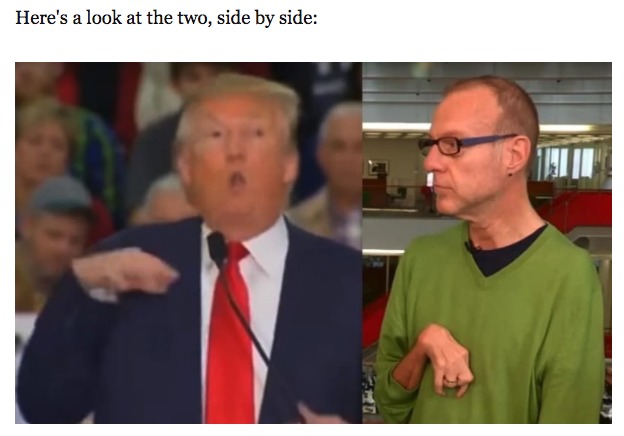
Thanks to this awful event, Trump delivered his slogan, ”make America great again”, to a huge audience. When he mocked the disabled reporter, he did so from his stand at a presidential meeting, where everyone could clearly read his slogan and his supporters’ banners. Therefore, when TV channels aired the footage of Trump bullying the reporter, they were also showing his campaign’s promotional materials. Plus, you must understand that Trump’s message is not: ”make America sympathetic again”. His core message is about winning. He is selling success. So bullying someone is not really something that jeopardizes his message, as long as he is the bully and not the victim.
Let us clarify: we are not saying Trump’s behavior is right. We are just offering an explanation of how he managed to become so influential whilst being the candidate with the smallest budget.
And this is just one of many examples. Remember the “grab ‘em by the pussy” video? Or that other time when he called immigrants “animals”? Or when he referred to the leader of North Korea as “short and fat little rocket man” on Twitter? All of these are awesome stories, from a public-interest point of view, and any journalist will pick up on and cover them. And by doing so, they are indirectly spreading his message. The president of CBS said, on the record, that the election of Donald Trump “may not be good for America, but it’s damn good for CBS”.
Possibly one of my favorite Trumpsaurus was the one where Donald Trump and Kanye West met in the Oval Office.
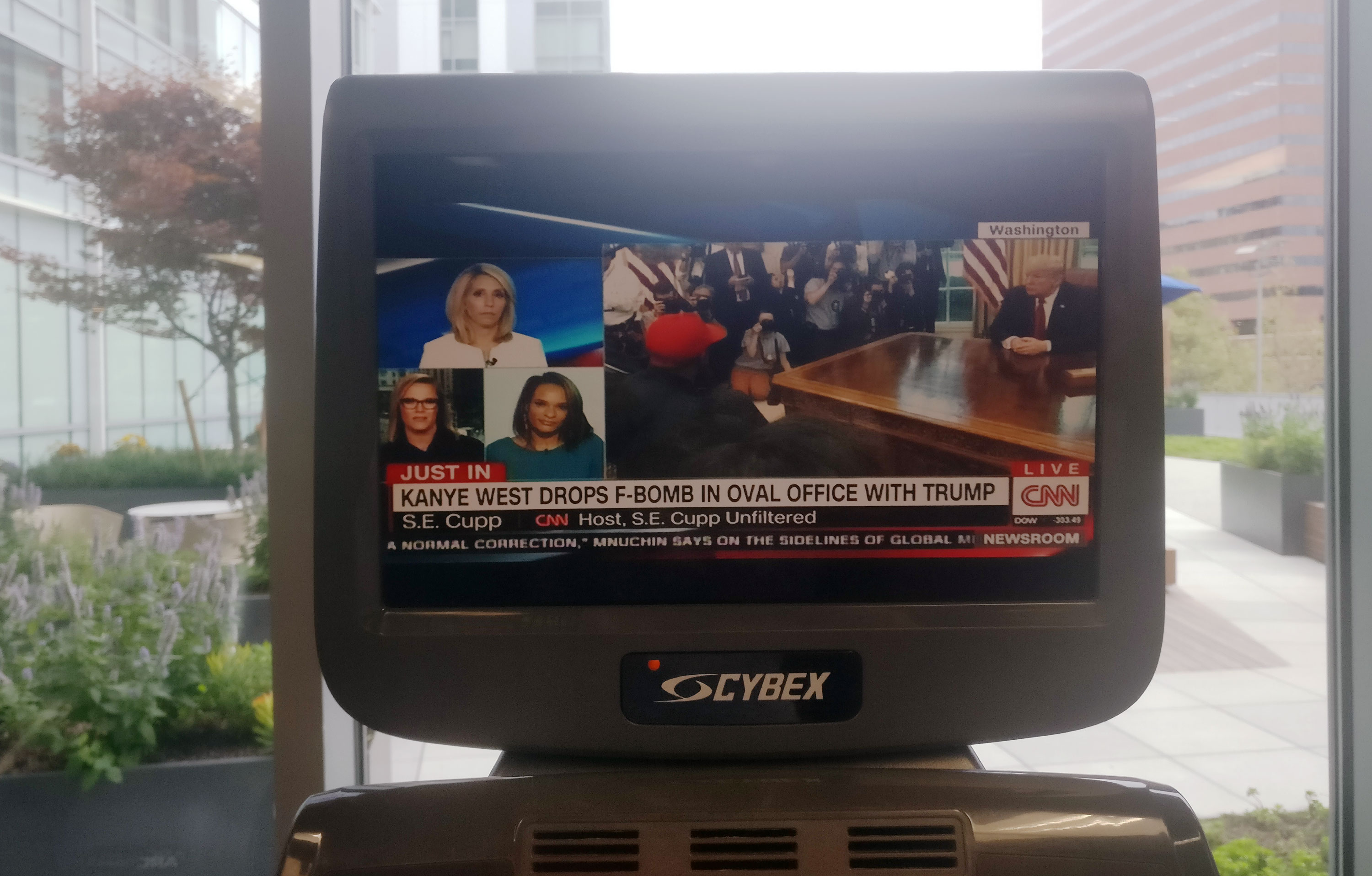
Isn’t nature something beautiful? It’s quite a rare event that two specimens of such prominence gather in the same space. Just for the fun of it, let’s take a look at the story through the News-Worth Canvas:
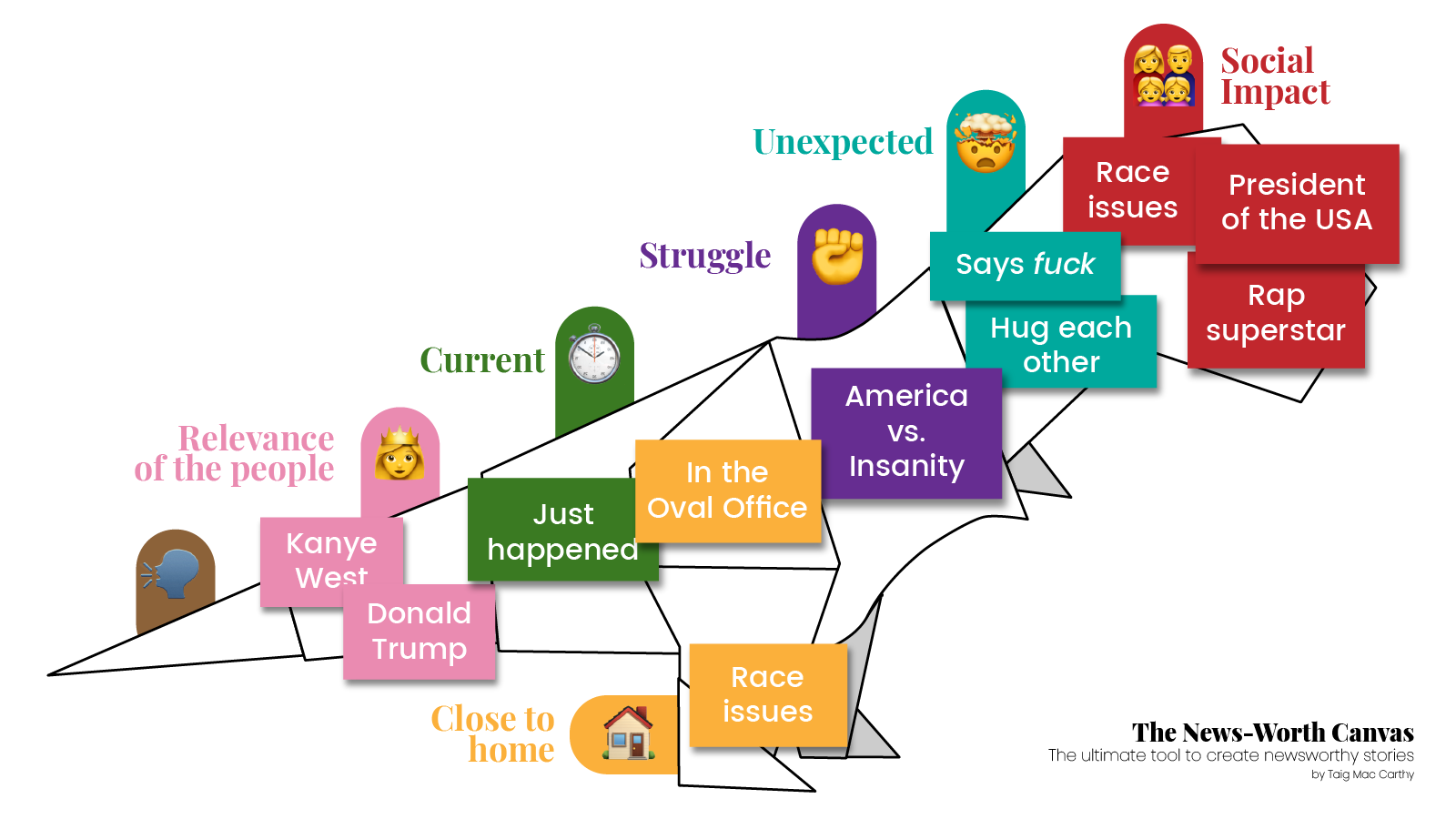
As you can see, it’s always the same pattern. This time, the unexpected element is that Kanye said fuck, that Kanye said that he “loved” Trump, that they hugged, or any of the other crazy business that happened during that meeting.
Both Kanye and Trump have a great understanding of News-Worth Dynamics and they know that saying crazy stuff is a great marketing strategy. In fact, why don’t you take a look at the video of them meeting at the oval office? This is what President Trump says to Kanye at the end of the meeting while pointing his finger at the journalists:
All over the world they’re talking about this, and I have to tell you, I had important meetings today with Senators and with everything; nobody cared. They wanted this meeting, this is the meeting, is that right? I can say that to John. No, the others were good, right? But this is what they want.
VIDEO: Gathering of dinosaurs: Donald and Kanye meet at the White House 11th of October 2018
Saying outrageous things might not get you the love and the validation your heart is seeking, but it’s definitely a very cost-effective strategy for spreading your influence and getting your product into the news.
If you want to learn more about Trump’s political strategies and debate tricks, I encourage you to check How Trump Manipulates The Media, a video by Charlie Houpert and Ben Altman.
WeWorksaurus
The WeWorksaurus raises an issue with a broad impact and places itself at the center of the discussion, gaining a great amount of second-hand attention. This way, it expands its exposure from a niche to the wider audience.
We met WeWork’s General Manager, Dave McLaughlin, at an event in Babson College in 2018. He told us about WeWork’s decision to stop offering meat at company events.
WeWork goes meat-free ‘to leave a better world’. APRIL 4, 2018. REUTERS.
Global office-sharing company WeWork, which operates in 22 countries, is going meat-free and will ban staff from expensing meals containing meat in a bid to “leave a better world for future generations”.
WeWork’s decision is a great example of how you can get free media coverage by striking at the heart of an issue with a broad impact. In fact, McLaughlin told us that this was the time that WeWork gained the most press coverage they have ever had. This is quite surprising for a company valued at US$20 billion, managing 10,000,000 square feet of office space and has a big fat marketing budget with an experienced communications team. But indeed, this event turned out to be the most cost-effective strategy to promote their company and engage with a very large audience.
Dave told us that the decision of ditching meat got them so much press coverage that the mainstream public suddenly knew about them. His dad, who lives in the country and doesn’t really understand WeWork’s value proposition in the startup scene, called him and asked: ”so… I’ve heard you don’t do meat anymore”.
To understand why this works, read this headline from the New York Times and check out how it looks in the News-Worth Canvas:
Memo From the Boss: You’re a Vegetarian Now. July 16, 2018. New York Times.
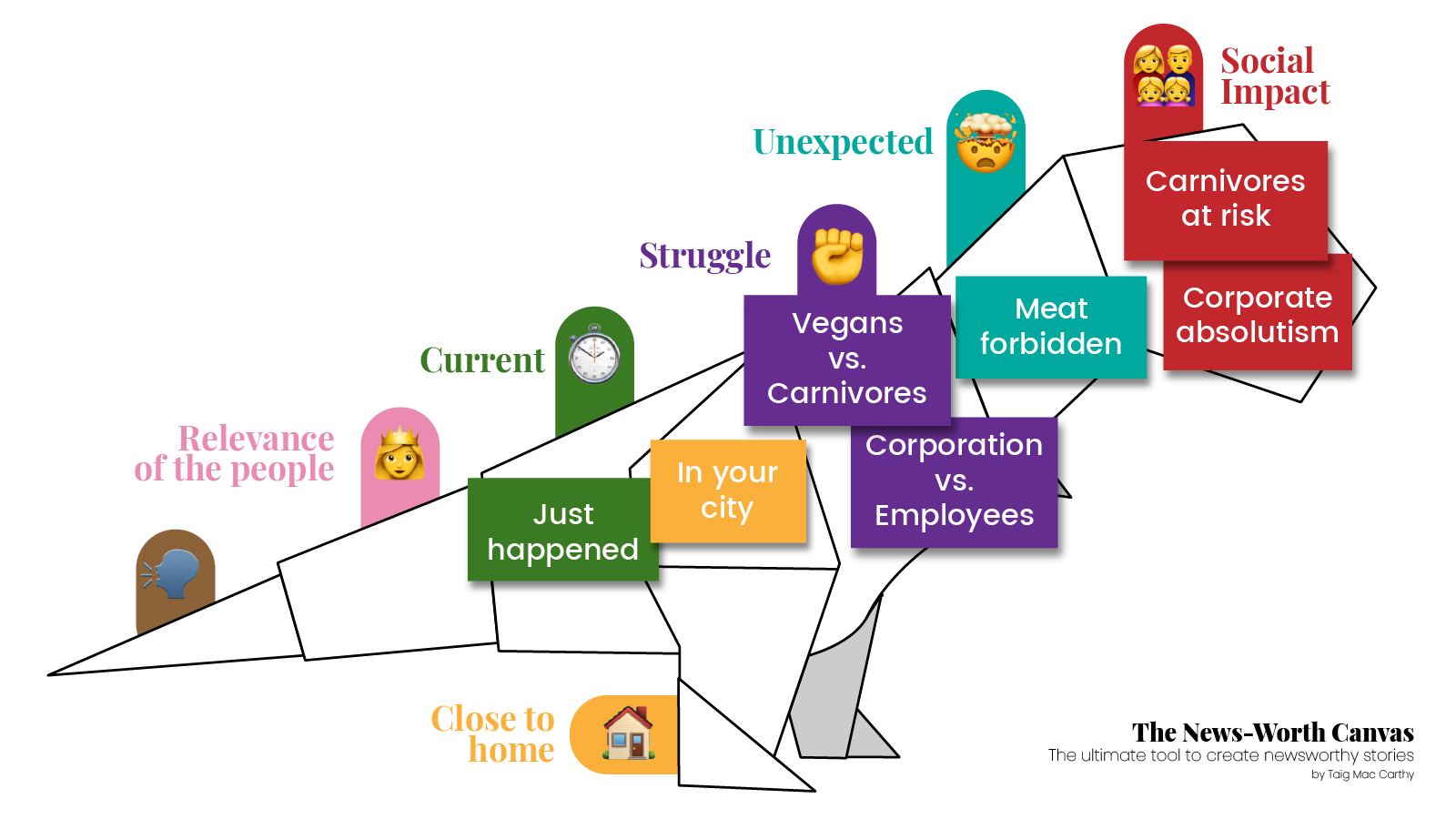
Only a very small percentage of the population cares about WeWork’s co-working services. However, everyone eats: that’s 100% of the population. And the choice between eating meat and becoming a vegetarian is a very mainstream topic that most people care about. It’s even likely that you have considered it yourself or have had an argument over it. Therefore, WeWork’s involvement in this issue granted them a broad social impact that otherwise they could have never achieved. That is how they became mainstream: the issue granted them the broad impact that they otherwise lacked.
As with every other social issue that has a broad impact, there was a fair share of conflict because everybody has an opinion on the matter. There were people in favor of WeWork’s decision and people against it. But the important thing is that people cared enough to have an opinion and talk about it.
You might think that the decision of not offering meat at company events is not such a big deal, right? I mean… come on, it’s not like they are taking away people’s freedom and slaving them into vegetarianism, is it? Guess again:
WEWORK’S NEW FOOD POLICY IS EVERY LIBERTARIAN’S NIGHTMARE. July 23, 2018. Vanity Fair.
The company’s enforced vegetarianism smacks of an ideological crusade—and it may not end with meat.
WeWork bans meat. July 13, 2018. Business Insider.
Therefore, the story also has elements of struggle and conflict because a company is forcing its employees to become vegetarian. This element adds up to the newsworthiness of the story and makes it even more publishable.
Some might say that Business Insider, Vanity Fair and The New York Times were distorting the facts, but that is not really what is happening. The reporters of those outlets are describing the event in a way that only focuses on newsworthy traits of the story. And to be fair, not all the press coverage was like this. Check out The Washington Post’s take:
What really matters is that in order to report on the event, every media outlet had to explain what the company does. As you can imagine, this is amazingly valuable from a marketing standpoint. It allows a business to expand its exposure from their niche to a wider audience, at no cost.
The Redbulldocus
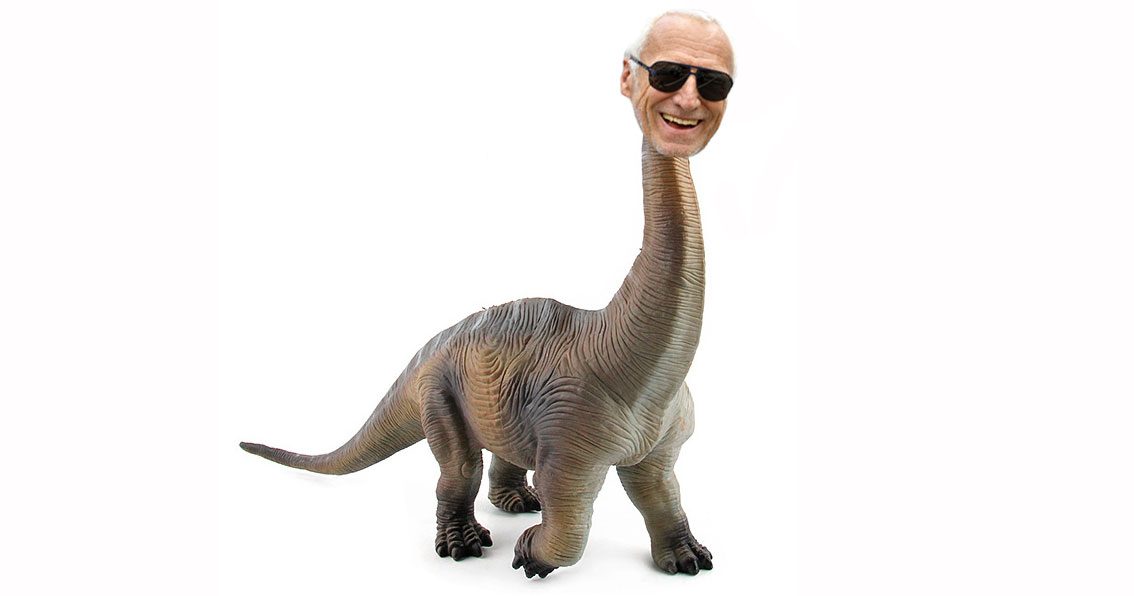
Among the biggest dinosaurs, the Redbulldocus has a tail so long that people protest about it. And thanks to the complaints, the Redbulldocus has become the most recognizable dinosaur in the reign.
This dinosaur is named after RedBull, the Austrian company that has sold 6,302 billion cans of a drink that no one cared about until they saw concerned people complaining about it on TV. The complaints featured Red Bull as a drink so potent that it could cause heart attacks. In other words: Red Bull is so good at giving you energy that you could die from an overcharge. That’s the key to the Redbulldocus’s success: being so good that it’s bad. It’s such a good bad reputation.
Each of the accusations against Red Bull’s potency became a newsworthy story in its own right that reinforced the idea that Red Bull was too good at giving you energy. Every time authorities in countries like France or Denmark banned Red Bull from being sold domestically, the drink got tons of free media attention and international exposure. Even when someone sued Red Bull for wrongful death in the US, they ended up gaining brand awareness.
Let’s draw out the forenamed elements in the News-Worth Canvas:
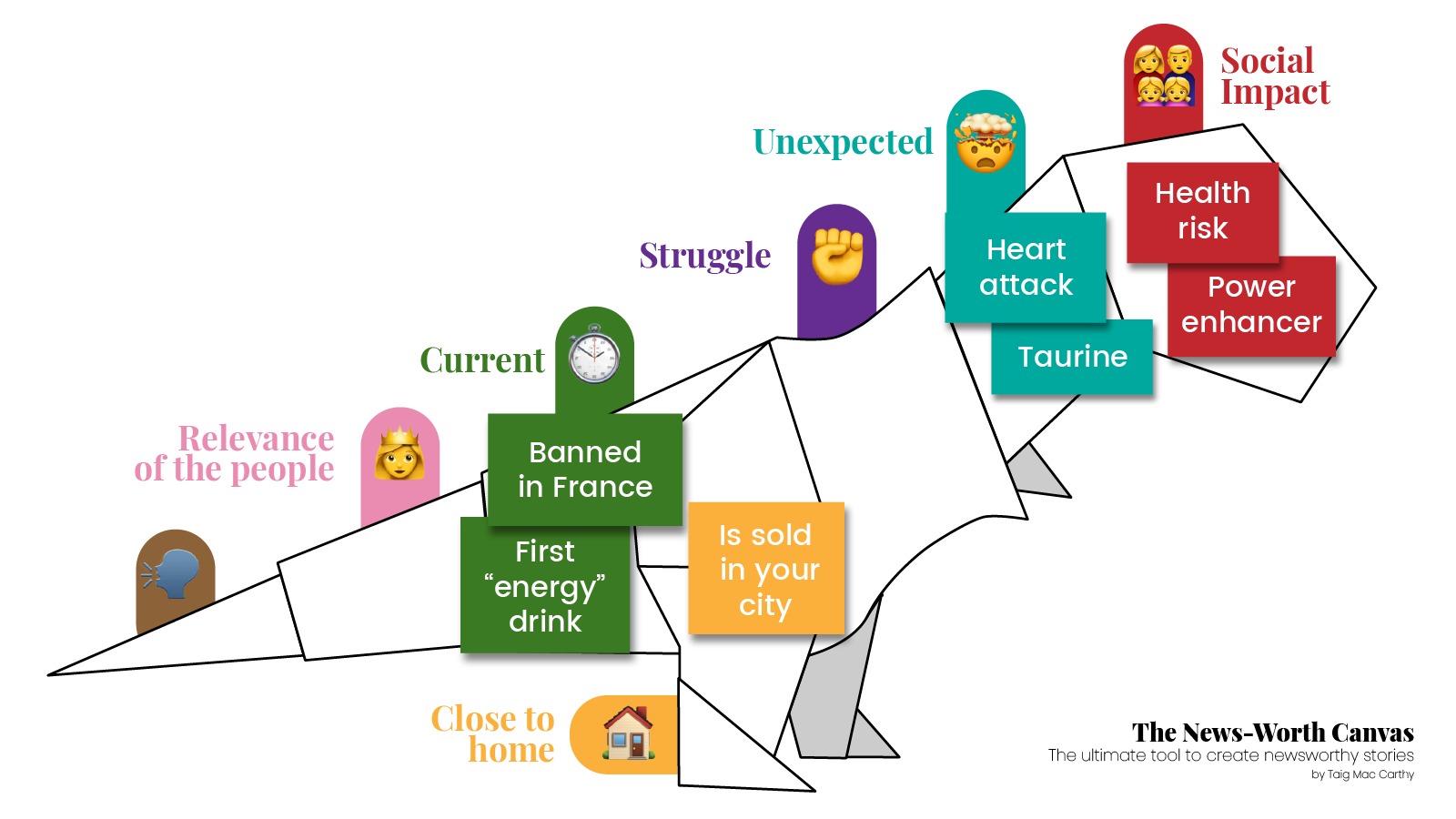
Thanks to the newsworthiness of these events, Red Bull made close to $12.5 billion in sales in 2015. The Austrian company is now a recognized global brand, which is quite astounding for such a young company that spends less than 20% of its marketing budget on paid advertisement. That is what a dinosaur does to a marketing strategy.
Surprisingly, no one has been able to prove a definite health risk in Red Bull. In fact, according to the European Food Safety Authority (EFSA), Taurine has no basis of scientific evidence to support any health claim at all. But that’s the funny thing about complaints: you have to prove the effects of your claims, but people who complain about you don’t have to prove anything at all.
Somewhere between 2008 and 2012 people stopped complaining about RedBull. Ever since, the company has performed many stunts to create newsworthy events, like making a guy jump from the stratosphere in 2012. But nothing will ever be as cheap and effective as making people complain about your potency.
A good way of introducing a RedBulldocus is saying that you are not something, because it implies that you have been accused of something, but it doesn’t require you to explicitly lie about it. If Red Bull had said: we are not killing people from an overcharge, that would have implied that people were claiming they did so. Therefore, a great way of introducing your Redbulldocus would be defending yourself from accusations in a press release, by simply stating that you are not something. This way, you will spark off a conversation that will benefit your brand awareness more than any other marketing strategy you can think of.
For example, the self-help author Tim Robins decided to name his autobiographical documentary I AM NOT YOUR GURU. Choosing that the title portrays the idea that people actually think he is indeed their guru. He does not explicitly say that he is a guru, nor does he provide proof of people calling him such a thing; but he implants the idea in people’s minds by saying he is not it.
The Ashleyraptor
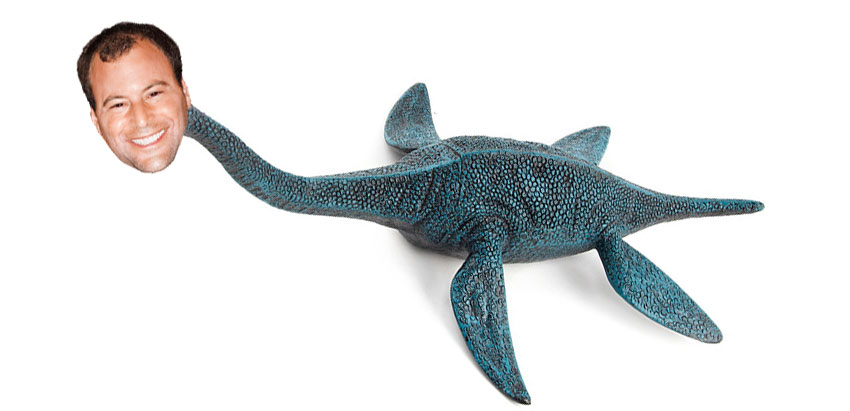
The Ashleyraptor serves as an answer to a question that we frequently ask ourselves: what is the worst thing that could happen? If a dinosaur could ever go wrong, this is the one. The Ashleyraptor is a dinosaur so dreadful and shocking that it becomes very well known and influential.
The specimen is named after Ashley Madison, a website that enables extramarital affairs. This Canadian company has one job: discretion. And they enormously failed at that some years ago.
The first time we heard of Ashley Madison’s existence was in July 2015, when hackers stole users’ data from the company servers. The hackers got hold of personal information of the site’s user base and threatened to release users’ names and personally identifying information unless Ashley Madison immediately shut down. Ultimately, in August of 2015, the hackers leaked over 25 gigabytes of company data, including user’s names, addresses, phone numbers, encrypted passwords, and partial credit card numbers.
Ashley Madison condemns attack as experts say hacked database is real
This event hits many of the criteria of news-worth. The story was a lead item in most newspapers of the world. The event is very current and novel since it had just happened and it was unprecedented. Furthermore, it had a very broad impact, since every husband and wife could potentially be affected by the event. It’s also close to home to many geographies as it affects more than 30 million people in more than 40 countries. And it is outstandingly bizarre and unexpected. It also brings up a lot of struggle because there is a moral component to it: in Alabama, editors at a newspaper decided to print all the names of people who appeared on Ashley Madison’s database as a way of “punishing the sinners”. Resignations, divorces, and even suicides followed, making such tragedies newsworthy events in their own right.
Pastor outed on Ashley Madison commits suicide. 2015/09/08. CNN News.
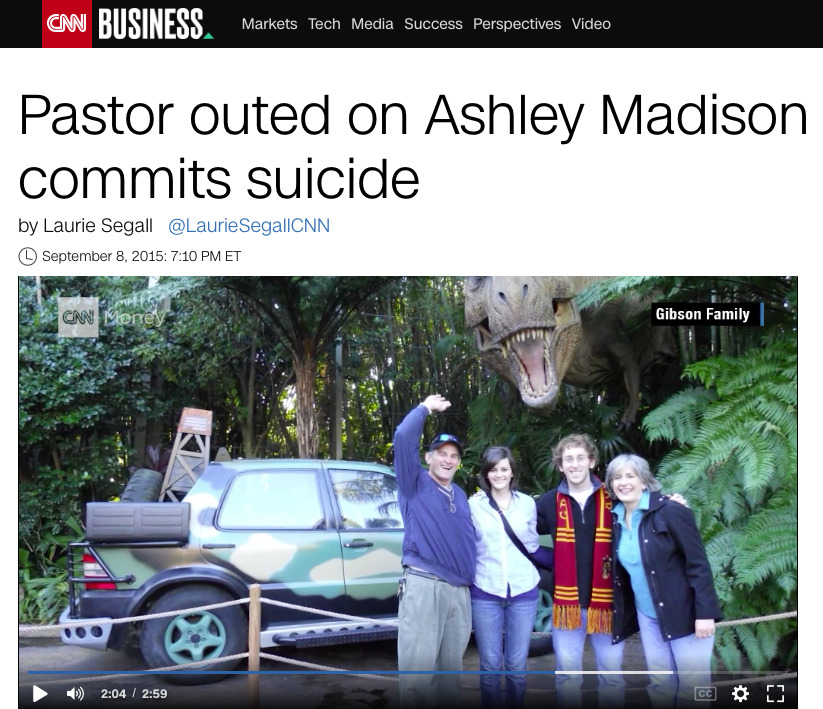
Ashley Madison Hack Could Have A Devastating Psychological Fallout. 08/20/2015. Huffington Post.
By definition, a dinosaur is a story that turns your company into a newsworthy event. And there is no question that this is one hell of a dinosaur. This event, disastrous though it may be, enabled Ashley Madison to be in the spotlight on a global scale and gain a huge amount of brand awareness without allocating a single dollar to paid marketing.
However, the data breach did cost them money — not in marketing, but in settlements. In July 2017, the company agreed to settle two dozen lawsuits stemming from the breach for $11.2 million, a quarter of its revenue.
Ashley Madison parent in $11.2 million settlement over data breach. 2017/07/15. CNBC.
And apart from the economic cost of this event, you might think that there would also be a loss in credibility and that the company could never possibly recover from it, right? Guess again.
Three years have passed and Ashley Madison is still up and running. Ruben Buell, former CTO and current President of the company, said in an interview:
We want to let people know that Ashley is here, Ashley is strong as ever. Yes, there was an incident in 2015 that was extremely unfortunate, and the firm has learnt from that, grown from that and moved on. 29 of March 2018. Engadget.
According to an independent report by Ernst & Young LLP, published on the 16th of February 2018, new registrations totaled 5,673,024 on average, and there were 472,752 new Ashley Madison accounts registered monthly during 2017.
According to Buell, there are 191,000 daily active users and 1.4 million new connections made each month:
The firm has always been very profitable and we continue to enjoy nice profits. 29 of March 2018. Engadget.
In Brazil, Ashley Madison saw an average of 138,865 new members per month in 2017, second only to the US. And in 2018, Buell expanded their operations in Taiwan, Japan, and South Korea.
Let’s be clear: we are not recommending you to breach your customers’ data to get media coverage. This is a terrible, terrible idea. We are just saying that it would be a newsworthy event and that it wouldn’t necessarily put you out of business.
The Uberdocus
Back in 2013, no one knew about Uber in Spain. But the American company had plans to conquer the Mediterranean market before any of its competitors. To achieve their goal, Uber chose to enter the Iberian peninsula through Barcelona by stirring up a hornet’s nest.
Barcelona is a great city for ride-sharing apps since it hosts millions of tourists that move around the inner city every day of the year. But it is also home of the highly regulated and very lucrative taxi sector that many families depend on.
Just one month into Uber’s operations in Barcelona, hundreds of taxi drivers came together to organize a strike in the streets of the city. The event was so intense that people were hurt during the protests. This event hits many of the 7 Traits of News-Worth, and it got a lot of media coverage.
Two injured in the protests of Barcelona taxi drivers against Uber. 2014/06/11. El País.
The protest alone turned Uber from a total stranger into a recognizable brand that people talked about in Spain, achieving a level of awareness that otherwise would have been very costly. And the awareness quickly translated into sales: during the week of the protest, Uber’s app became the third most downloaded iPhone app in the country — without a single euro spent on marketing.
This is a good example of how a foreign entity can turn itself into something that is Close to Home. The strike in Barcelona was a very local event, so even if Uber is not a local company at all, they became a newsworthy entity. And this strategy has been replicated by Uber in many cities all over the world, so it is as scalable as any other marketing strategy.
The Vicesaurus
The Vicesaurus is a specimen known to have a very bad influence over others and therefore becoming very popular. It is named after the video game Grand Theft Auto: Vice City, that came out in 2002 and changed the gaming industry forever due to its violent and explicit content.
This video game is yet another example of the power of dinosaurs. Within two days of its release, Vice City sold 1.4 million copies, making it the fastest-selling game in history at the time. By March 2008, the game had sold 17.5 million units worldwide.
Most teenagers came to know of the game because they saw it on the news channel. Apparently, it was so violent, realistic and addictive that it would turn a whole generation into serial killers. Jeremy Pope, who worked developing the video game, vowed never to work on violent games again due to their portrayal in mainstream media. This was his statement:
I was pretty proud of being involved, but then when I would visit my grandmother in highly religious Alabama and have to explain what I do for a living, I didn’t feel so great about explaining to her that I was a part of ‘that game’ she’ve been hearing about.
Think about it: without investing a single dollar, grandmothers in Alabama started talking about a video game, back in 2002. Try achieving the same result with paid advertising. It would be impossible. That is the power of dinosaurs.
The story hits many of the 7 News-Worth Traits. More particularly, the idea of stealing a car and running over prostitutes was so bizarre that it made it very newsworthy. Plus, the event brought up the issue of violence in society, and it became a platform for the public to argue about it. That is how Vice City became well-known among the public, even if video games were not a mainstream topic at the time.
Let’s draw out the newsworthy elements of Vice City in the News-Worth Canvas:
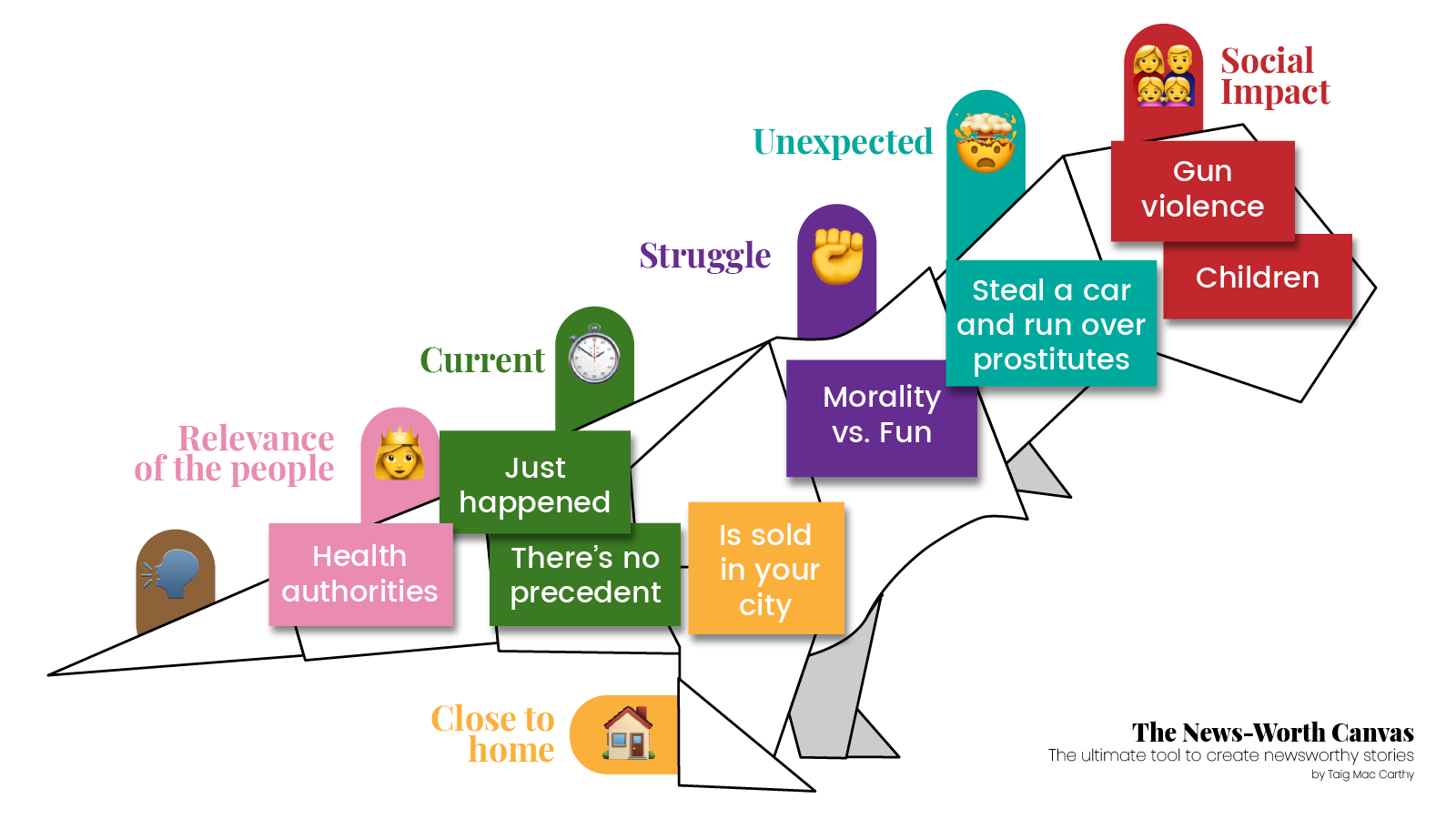
The key, as with the Redbullsaurus, is making people hate what other people actually enjoy about your product. With Vice City, the game was so violent and addictive that you could become a serial killer. And that’s exactly why people wanted to buy it. Every complaint against the game was also a compliment towards their value proposition.
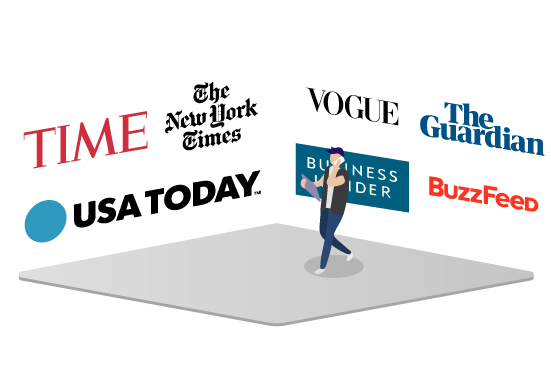
CONTACT THE MEDIA: How to contact journalists and get them to publish articles
Whether you’re just starting out or are a seasoned veteran, effectively sharing your message with reporters can be tricky at times. Hopefully, you’ve already spent time crafting a great press release and are ready to fire it off. Now, it is time to figure out who, when and how to send your story to.
But before getting into specifics, a word of advice: calling media outlets is a task that entrepreneurs often delay unnecessarily. In our experience, the reason for the delay in executing this task is fear of rejection. This is a psychological barrier we cannot help you with, you must simply overcome it. The one thing we will say is that the only way of getting good at something is by doing it as many times as possible, and we hope these guidelines will encourage you to put your knowledge to the test as soon as possible.
Contacting reporters is one of the most important, valuable, and high return activities in the PR field. There will always be reporters that you have not had prior contact with, and it is important to make a good first impression. This is why we developed this chapter explaining the ins and outs of how to contact journalists and get them to publish articles.
Choose the right moment
Timing is a determining component of media dynamics. Many topics are more relevant at certain moments of the year or specific periods, which means that the same story can be rejected or published depending on when you choose to contact the journalist.
A good tool for deciding the best time to place your project in the media is Google Trends. Thanks to this free tool, you can see when people search for a certain topic.
Let us give you a clear example. Imagine that you are releasing a weight loss product. When should you get in touch with journalists? Or rather, when will a journalist be more inclined to publish a story about your weight-loss project? Let’s look up google searches for the ‘Weight Loss’ topic in the United Kingdom in the last five years.

As you can see in this five-year view, there is a very clear pattern that repeats every year: it peaks and fades out in cycles. This way we know that interest in weight loss is periodical: it repeats itself every year.
Now let’s zoom in on one year to see which weeks of the year people are more interested in weight loss.

We can clearly see that Brits care a lot about weight loss after the first week of January, but their interest declines progressively as the year goes by. However, this is not the case when looking at the Spanish audience:

Likewise, there is also a big spike in January, but we see two more points of interest in April and in June. Therefore, it is fair to assume that January would be a very good period to get both Spanish and British journalists interested in a story involving weight loss. Nevertheless, in Spain, you could also leverage the interest peaks from April and June to reach out to journalists.
This is how Google Trends can help you design a timeline for your media strategy that is based on real data from what people search for in google. This way, you can choose the most adequate timing to contact journalists and leverage naturally occurring peaks of interest.
Warning: the fact that your product is more relevant in a certain period does not necessarily mean that it will sell better. In the same way, the fact that the topic is more popular in a region does not necessarily mean that the region is the best target for a marketing strategy. Google Trends data only means that people are more interested in hearing or reading about that topic, not necessarily paying for it.
There is something else to watch out for. As we have mentioned, you are competing for people’s attention against other events that might be happening. This means that journalists will be more inclined to publish a story when there is not much else going on.
Sometimes the timing is simply against you. If there is a major political upheaval or natural disaster that appears out of nowhere, it suddenly changes the news priorities of the day. All the stories that were going to be covered are abandoned to throw resources and space to covering the major event. So if there is a natural disaster, a royal wedding or if something happens to a celebrity, journalists will have plenty of content and therefore will be less interested in what you have to offer.
And last but not least, remember that journalists are human beings with regular working calendars. If you call the newsroom during a bank holiday, it will be harder to get in touch with the right person.
Targeting the right journalist
To get your story into the news, it’s very important that you get an idea of the hierarchical structures of media companies so that you can identify the decision maker and navigate your way to the right person. Luckily for you, journalism is a very systematic business, both in structure and hierarchy.
The content of media outlets is divided thematically into different SECTIONS. This is true for newspapers, TV, radios and most blogs. For instance, in the British paper The Sun, you have sections such as FOOTBALL, TV & SHOWBIZ, TRAVEL, MONEY or TECH among others.

In USA TODAY you will find a different arrangement, but it’s also divided into sections such as SPORTS, LIFE, MONEY or TECH.

And it’s not just for written media; TV is also divided into sections in its own way:

The idea of section applies to media outlets everywhere in the world, as you can see in the following examples from China, France, and Japan:



Understanding what the right section for your story is will make the job so much easier because you can tweak the press release in a way that fits in better with the content of that section. Due of this, effectively getting your message in the media means aiming for the right section.
Once you know the right section for your story, you can directly contact the journalist of that section and introduce them to your story. Regarding hierarchy, note that each section has its own team, which is managed by THE EDITOR of that section. The editor is the leader of the section. Thus there is a Sports Editor, a Money Editor and so on. The editor of the section supervises THE REPORTERS and assigns stories to them. The reporters are below the editors and they follow their command.
Therefore, when calling a small or medium-sized media outlet, you might want to ask for the editor of a particular section. But if it’s a larger outlet, you will have better chances of speaking with a reporter. Usually, reporters get to decide their own stories, but the editor has the last word and they can push or block stories if they want to. And remember that they are very busy people who are always in a hurry, so be mindful of their time and act in accordance with their proceedings.
The 10-Step Guideline
These are the steps that you need to follow to get in touch with a journalist and get them to cover your story:
- Look for the main telephone number in the outlet’s contact section of their website, or their Google Maps listing.
- Decide which section you think is more appropriate for the story (Sports, People, Money…)
- Call the outlet’s main number. The best time to pitch a journalist is between 9 and 11 a.m. The secretary will answer, and you’ll confidently respond: –Good morning, I’d like to speak to the editor of the whatever section. Thank you.
- When you get on the phone with the editor or the reporter of a section, start by asking “Is now a good time?”. Then you thank them for their time.
- Ask their names and write them down. Don’t ever forget their names.
- Tell them about the story by reading out the heading of the press release in a way that it feels conversational. The reporter is trying to figure out if you have a newsworthy story, so stick to the press release because that’s the best arrangement of elements to show it’s newsworthiness. The editor is also judging your speaking skills and your overall personality to determine if you are fit to be on camera. So be nice, pleasant and smile – people know if you are smiling over the phone.
- Ask them for their personal email so that you can send them a press release. If they give you the section’s general email that’s also okay (i.e., society@newspaper.com) because you know their name.
- Send the press release to their name, both attached as a Word Document, and as a text on the email itself. The subject of the email should be the heading to the press release.
- Wait 20 minutes
- Call again to make sure they have received the press release, and tell them that you’ll be happy to share further information or meet them for an interview.
The expected outcome is that the editor or a reporter will call you back to request further information or to schedule a date for an interview.
Finding out journalists contact information
In step 3 of the guideline: Call the outlet’s main number, we talked about calling the main telephone number of the media outlet and asking the secretary to put you through the editor of a particular section. This strategy may seem to easy, but it is what we recommend most, for a number of reasons.
Firstly, because you can do it right away. You just need to find out the main number of the outlet, pick up the phone and read your press release. It will take you less than five minutes to have your first attempt at explaining your story to a journalist. Then you do it again with a different outlet. And by the time you have pitched your story to ten journalists, you will be good at it. And you can do it all over the course of a single morning. Even if you fail 80% of the times, it is still the most time-effective way of getting in touch with journalists.
Secondly, because finding a journalist’s phone number is a task in itself and is more time consuming than people foresee. You must first research the identity of a journalist, which involves some effort, and then find their phone number, and it’s not always easy. And once you finally get on the line with the right person, you get to pitch — which is the main thing you want to be good at. This process may have taken you days.
If you want to go ahead with this strategy instead of simply cold calling, that is fine; although not our first recommendation. Some of the companies we have worked with over the years have had great success with research-and-target strategies. For instance, with a company called Watchdog Labs from Boston, we looked at the stories published by media outlets regarding topics related to the company, and then searched which journalists were writing about those particular topics. Then, they followed the journalists on Twitter and messaged them with info about the story.
Follow up
One of the most important and overlooked steps when contacting the press is following up with reporters. You should always follow up. If the reporter does not get back to you, you should remind them of the story. Likewise, if the reporter publishes an article about you, you should thank them for it. Either way, you should follow up.
The key to a successful follow-up is knowing the name of the person you need to talk to. It’s so much easier to get past the secretary once you know who you want to reach, that’s why step 5 of the guideline: Ask their names and write them down, is so important.
Following up after a rejection
Once you have pitched your press release, if neither the editor nor a reporter gets back to you after a couple of days, you should call again and kindly remind them about the story. They may have forgotten about it because they are very busy people, and they will actually appreciate you following up on the lead.
However, it is possible that the journalist tells you that your story is “not a good fit” or that “their boss didn’t like it”. If they are not interested in the story, try to find out why. They will provide very valuable feedback. Maybe it is not the right season? Maybe the story is not interesting enough? This will help you rethink the press release and call again.
These are the most common reasons for a journalist rejecting a story:
- Bad timing: if it’s a seasonality problem, you can call back when the right time comes, or you can change the angle of the story.
- Too much going on: if there has been another major event in that week, they may be focusing on that. Try calling in a week or two.
- Not newsworthy enough: you need a bigger dinosaur.
- They didn’t like you personally.
If they do reject your story, keep it friendly and politely thank the journalist for their time — especially if the problem was that they didn’t like you. Don’t feel despondent, your next pitch may win them over. Relationship building can be the best way to increase your media coverage.
Following up after the story gets published
Likewise, you must follow up once the story gets published to thank the reporter for spreading the word. 65% of journalists track how many times their stories are shared on social media, so the best way of showing gratitude is by helping them get clicks and page views.
Whether you tweet it, post it to Facebook or just pass it around to company employees and stakeholders, the extra reach will go a long way when it comes to strengthening your relationship with a reporter. And when you do, don’t forget to mention the outlet’s social media profiles and even the journalist’s account.
Once the story is shared, we recommend calling or writing an email to the reporter letting them know that you shared the article. You can say something in the lines of:
I wanted to thank you for the article. It really means a lot. We have shared it on all our social media and people are loving it.
Thanks again for your time and energy.
TIPS
Use the phone
You might be thinking that, when contacting journalists, it might suffice to send an email instead of calling. That is a terrible idea. If you don’t call, you are wasting your time, regardless of how many emails you send.
Firstly, because editors and reporters receive hundreds of emails from people they have never met. Most of them contain spammy introductions and boring press releases attached that add no value to their work. Therefore, journalists ignore emails by default. Wouldn’t you?
And secondly, finding peoples emails addresses is a task in itself and is more time consuming than people foresee. On the contrary, picking up the phone and calling the main number will take you five minutes, and it’s a much better way to measure their interest.
Get this into your head: you have to use the phone.
Look for journalists’ info in the masthead
A good hack for finding information on specific journalists in any given media outlet is searching the word ‘masthead’ inside their websites, just like this:
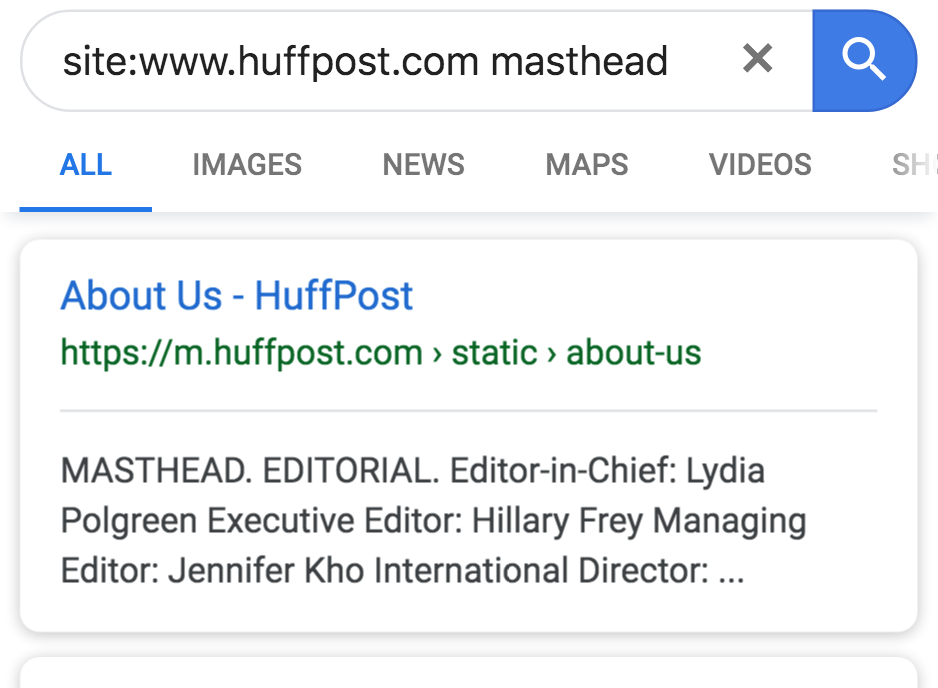

This will usually take you to the static directory of journalists that work in that outlet, which often includes phone numbers.
Please note that in British English usage, the masthead is known as imprint.
Google Maps
If you are having problems locating the main telephone number of the outlet, something that usually works well is looking for it Google Maps.
Many outlets hide their regular telephone numbers on purpose, and instead, direct calls to a call center, where you will have little or no success in reaching journalists. However, companies tend to put their real telephone number in google maps listings for many reasons.
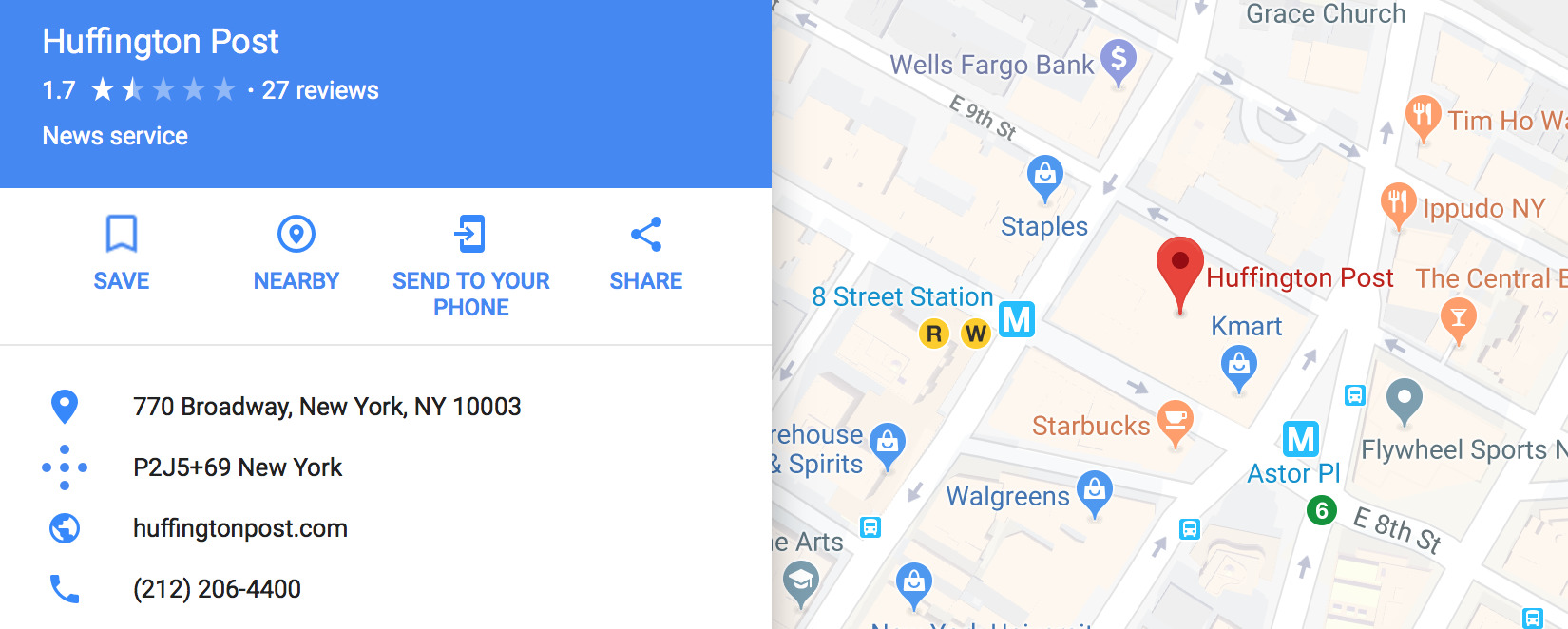
For this to work, it is important to make sure that you are looking at the right city. Many outlets have offices in different cities, as well as printing and distribution facilities. So you must make sure that the place you are calling is where journalists actually come into work.
Talk to journalists as if they are your friend
Our advice is to write to journalists as if they were your friends. Treat them like people, call them by their names and be slightly informal.
When asked, why do you immediately reject otherwise relevant pitches?, 22% of journalists cited a lack of personalization. Journalists receive dozens of emails every day from PR companies and all of them tend to look the same: “Dear Susan, we thought this might be of interest to you (…)”. Thus, these kind of emails become very easy to ignore.
This is why we recommend being personal and informal when talking to journalists, both over the phone and by email.
Present yourself as the most relevant person
Remember that Relevance of the people involved is one of the seven traits of news-worth. Therefore, Journalists want to talk to the relevant people involved, which usually means the founders or the CEO of the company.
Although PR is often delegated, writers want to be contacted by founders and CEOs of companies. We recommend using the founder’s email to send press releases because the response rate is higher.
Promise them the scoop
A good way of getting an editor or a reporter interested in your story is letting them now that another channel or newspaper is interested too, and assuring them that they will be the first to get it. This is why Media Coverage itself is one of the traits of news-worth.
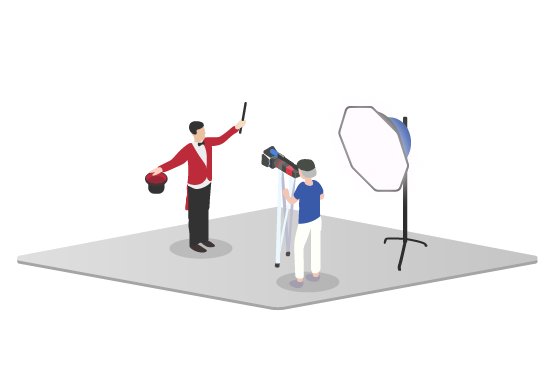
PERFORM THE INTERVIEW: You really don’t want to fuck up here
The last step in the process of getting free media coverage is performing an interview. Journalists want to talk to the people involved in a story so as to be able to ask questions directly, as part of their due diligence process. Besides this, in audiovisual media, they usually have to take their own pictures or record video footage to air the story. Naturally, in most cases performing an interview is unavoidable.
Performing interviews is a critical task. There are many factors to consider and even a tiny mistake can have an unwanted negative impact on the coverage of your story. This is why we thought it necessary to dedicate a chapter explaining everything you need to bear in mind about performing successful interviews and avoid avoidable mistakes.
Interviews should be fun
Some authors portray the idea that the exchange between the interviewer and the interviewed can easily turn into a confrontation. You will find references to “hostile” or “tough” questions in many PR manuals. We believe this idea to be wrong and a misconception with harmful consequences.
On the contrary, we have seen that most interviews are very friendly encounters. It makes sense because the relationship between the journalist and the entrepreneur is bound to be mutually beneficial. We all share the same goal: to produce the most entertaining and engaging content possible. The confrontation can only happen when the entrepreneur has a goal that is opposed to producing entertaining content — and they should avoid doing so, for their own sake.
Let’s see an example. Imagine that a journalist asks you this question: —Don’t people hate your product?. An inexperienced spokesperson might see this as an attack. But it’s really not. It is simply a very entertaining question that the audience will enjoy. So when coming up with an answer, you should ask yourself: what would be a very entertaining answer? And you reply with that. For instance, you can address the haters in a way that actually benefits you. Or you can drop any of your sound bites.
Dealing with reporters’ questions is not a fight; it’s more like a dance. You are performing together, not against each other. Any questions that might sound hostile in a normal conversation are simply entertaining material. And if you treat them as such, the outcome will benefit both you and the journalist because the content will be more shared, remembered and liked.
Answer with sound bites
Being an effective spokesperson means knowing the story you want to tell by heart and telling it in an entertaining way. It is really that simple. So the best way of conducting yourself during an interview is repeating pre-defined sound bites that capture the newsworthiness of your story in an entertaining way.
Lady Gaga’s 100 people in a room is a very good example.
All media outlets are on the look-out for that one snappy quote or compelling sound bite that will stick in the minds of their viewers, listeners or readers. A great quote or sound bite on top of an already newsworthy story can see it move close to the front of the newspaper.
That is why during the interview you must strive to revisit your key messages often. This is easier than it looks because many questions will fall into similar topics or themes, so you can organize them under issue buckets, and then, no matter what challenging question is posed, you can transition to your sound bite. In ‘PR-lingo’ this is called staying on message. You should make it your priority to stay on message if your interview starts going places you weren’t expecting it to go.
To help you stay on the message, we advise you to develop at least three key messages to weave into each interview. Each of your soundbites should have two or three sentences in length or 15 to 30 seconds when spoken, and should directly address the newsworthy elements of your story. We encourage you to build your soundbites as if they were headings for press releases, using the News Builder and the News-Worth Canvas.
Your dirty little secret
Staying on message is especially helpful if you have a dirty little secret. There is always at least one question that you don’t want to answer on camera. But you don’t want to end up lying either because that can easily backfire. Likewise, there is surely something that you really want to say — either because it is essential to the story or because it sounds super cool. And you don’t want to end up not saying it just because it didn’t come up. So you trade places. You reply to the unpleasant question with the cool answer, even if it’s not directly related.
Let’s have an example: imagine you are manufacturing your products offshore, and that’s not something you are proud of. As we explained, you don’t want to lie on camera. That is a bad idea. But if you actually say that you manufacture offshore, there will always be a video of you saying that. So what should you do? Imagine that you got asked about that on live TV – how would you answer?
You simply give them an answer to a better question. You drop one of your soundbites. For instance:
-Where do you manufacture the products?
-We use a technology that has been developed and patented at our university.
Or:
-Where do you manufacture the products?
-The design has received an international award for its innovation.
The trick is thinking not about what the journalist asks, but about what they really want to know. They do not care about the location of your factory. They are just looking for elements of news-worth: something that makes it Close to home or somehow Impact a broad audience.
Give them a dinosaur, or they will dig it themselves
Journalists need a heading that will catch people’s attention. They are paid to do that. If you don’t give them a good story, they will find it elsewhere. That is their job. Reporters will interpret the facts in a way that is interesting for the audience. They are not paid to do your advertising — they are paid to find a newsworthy story. And the more drama, conflict, and weirdness involved, the better the story will be because it will hit more traits of news-worth.
If you don’t give them soundbites that are compelling in some way, they will have to come up with their own — and you might not like what they have to say. So the best way of avoiding a bad surprise is providing quotes that a reporter in any medium will be tempted to use directly.
The same goes for images and video footage. If you do not provide something compelling enough, they will come up with it themselves, and it will steal the spotlight from the story you want to tell.
So you give them a dinosaur. It can be a Trumpsaurus, a Blazeraptor, an Elonsaurus or any other dinosaur you can come up with. It does not matter as long as it is a damn dinosaur, because it is socially relevant, it has a broad impact, it’s interesting and it is exactly what you need.
Excusatio non petita
There is a sentence in Latin that says: Excusatio non petita, accusatio manifesta. The literal translation is ‘non-requested excuse, manifest accusation’. More loosely: he who excuses himself, accuses himself.
Excusatio non petita is something that people do when they are hiding something. If the reporter asks you about some random thing, you might end up weirdly addressing the skeleton in your closet. This is what excusatio non petita sounds like:
– Where do you produce the products?
– Not in China!
This kind of over-explaining is the most common mistake people commit during media interviews. It’s a mistake that people are usually not aware of making and that is completely avoidable, so we have deemed it necessary to address it.
Excusatio non petita is the opposite of staying on message. The key to avoiding this mistake is to stay on message. Remember that you have sound bites ready to deliver at any time, so there is no reason to panic. The key here is bearing in mind that, usually, no one will ask you about your dirty little secret. So whenever you think that a question is referring to the skeleton in your closet, think again; it’s most likely a misunderstanding or a coincidence.
Put on a show
In visual media such as TV or newspapers, journalists usually have to take their own pictures or record video footage to air the story. When journalists record footage, they are literally gathering footage for a show — not so different from a movie. So it’s only natural to think of yourself as an actor, and the space as the movie set.
When you write a press release, you are writing not about the product; but rather about the newsworthy elements of the story. The same applies to the interviews: you need to create scenarios and project images that help people understand the newsworthiness of the story.
Therefore, you must plan in advance how to put on a show. What can you display to entertain the audience? How can you quickly make the audience see what is important? For instance: when we were making blue wine, we took journalists to the laboratories in which we had developed the formulae. And once we were there, we dressed up in white scientist coats and we displayed test tubes with blue liquids. We didn’t really use that equipment in the development process, but it allows people to quickly understand that there is science involved.
No matter how boring and mundane your company is, there has to be something visually compelling. And you must stage an environment that makes sense to the audience, regardless of its accuracy. That is what putting on a show is all about. You need to supply visual elements to help the journalist create an entertaining piece of informative content.
TIPS
Control the logistics
As Nan Tolbert puts it: “A media interview is a 50/50 situation, and you’ve got 100% control of your 50% of the interview”.
Control the logistics of the interview and feel free to set a time limit with the reporter. By holding an interview of 30 minutes, you are more likely to stay focused on key messages and not become distracted during a drawn-out exchange.
Select a venue which affords you the most control and, if needed, privacy. If the interview is scheduled in your office, hold all but emergency calls, clear the work area of proprietary materials and alert your colleagues that you’ll be involved in a media interview that will take priority over potential interruptions.
Clothing
- Do not wear sunglasses.
- Do not wear white — it glows on TV.
- Do not wear black — it’s too harsh and sucks up all the light.
- Wear grays, blues, and browns.
- Wear pastel shades for shirts/blouses.
- Do not wear patterns, plaids, florals, checks, stripes or dots.
- Avoid big jewelry, especially dangly earrings.
- Do not wear buttons or slogans – no one will be able to read the slogan, and it will just come across as tacky.
- If you wear glasses, then wear your glasses. However, you may want to get glare-proof glasses.
Take a few seconds to gather your thoughts when necessary.
If you’re hit with a question that you totally did not anticipate, it’s ok to be briefly silent whilst you collect your thoughts and consider your response. This is preferable to babbling out an answer for the sake of filling the silence.
If you choose to pause long enough to collect your thoughts, that silence may be respected — and it will come off as you having been deeply considering the question — or someone else (usually the interviewer) will attempt to fill it, probably with an attempt to “clarify” the question.
Either way, taking a few seconds to collect your thoughts is a very good idea and you should feel free to do so.
Be super nice
Being nice to journalists, photographers and anyone involved in the interviewing process is extremely important.
Right after interviewing you, journalists are going back to their office and they will edit the footage or write a story about you. They will make creative decisions that will have an impact on how the audience receives your message, and they are more likely to choose favorable scenes if they actually like you. Therefore, being nice when the camera is off is just as important as saying the right things when the camera is on.
Besides, remember that journalists cover some of the most terrible things that happen in the world. For that reason, visiting your startup might actually be a break for them. So try to make it enjoyable.
This might be pretty obvious for you, but for those out there who haven’t figured it out yet: being nice to people is the best and simplest strategy to build relationships. Smile! It will help you to relax; it will project confidence and will help to win over your audience. Remember, It’s nice to be important but it’s more important to be nice.
If you don’t want it published, don’t say it
When you agree to be interviewed, don’t assume you can tell someone that part of what you say is “off the record”. Anything you say will have an impact over the interview, either directly or indirectly.
If you don’t know an answer, say so. Don’t speculate. Refer the reporter to someone who can answer the question or say: —I don’t know the answer; I’ll have to look into that for you—.
But most importantly: never expect a journalist to lie for you. That is a big deal. If you decide to lie to a reporter that’s up to you — we certainly don’t recommend it. But please don’t try to make the reporter an accessory to your lie because it will get you nowhere.
Media outlets are, and they have always have been, a tool for those in power to control the masses. Kings controlled the first printed newspapers and so did political parties. Now, Fortune 50 companies are buying the outlets — just like Jeff Bezos bought The Washington Post for $250 million in 2003, or Salesforce CEO acquired Time Magazine for $190 million. Information is power.
Salesforce CEO buys Time Magazine for £144m. 17 September of 2018. THE INDEPENDENT (UK)
Amazon’s Jeff Bezos buys The Washington Post for $250 million. Aug 5, 2013. THE VERGE (US).
Journalists are caught in the middle of it and they hate it. They have nothing to gain by spreading propaganda for their owners. But sometimes they are forced to do so. So if they dislike being manipulated by the person who pays their salaries, imagine how they feel when someone like you tries to manipulate them. Good luck with that.
More coming soon!
